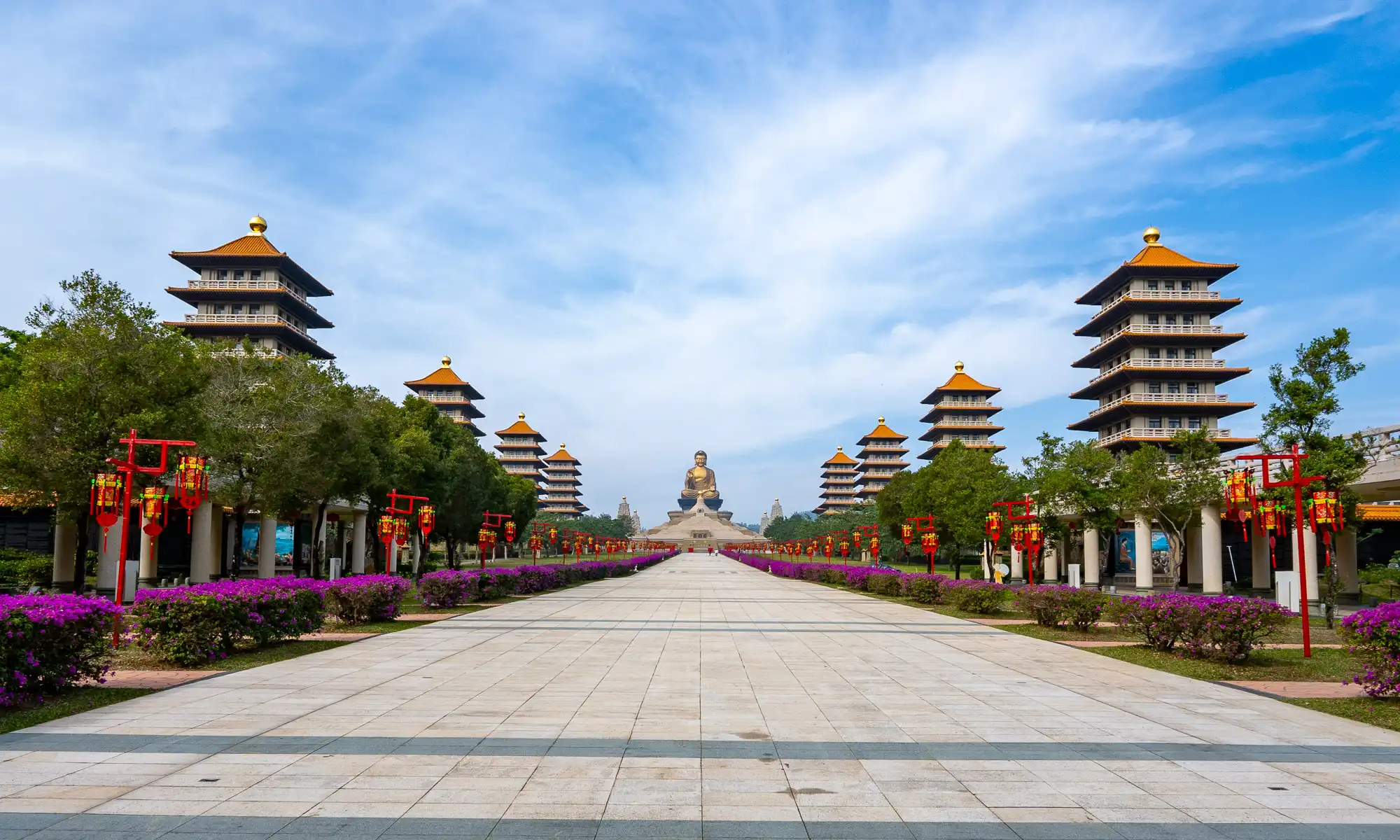An Insider’s Guide to Kaohsiung – Hakka Villages, Temples and Mountains
The boundaries of Kaohsiung City stretch way beyond the city itself, in fact, they stretch all the way to the tallest peaks of the Central Mountain Range and as far north as Jade Mountain.
Beyond its urbanized downtown, Kaohsiung City is home to natural wonders like eroded badlands and rejuvenating hot springs, as well as culturally rich towns and the country’s largest Buddhist complex.
Quiet towns like the Hakka settlement of Meinong offer slow travel and hands-on experiences with traditional culture, including oil-painted umbrellas and traditional Hakka garments, while mountain retreats like Baolai are known for their numerous hot spring hotels.
The nation’s largest religious complex, Fo Guang Shan, which comprises Fo Guang Shan Monastery and the absolutely stunning Fo Guang Shan Buddha Museum is also a short drive away.
Finally, Lotus Pond in Zuoying is famous for its water temples, towering religious statues, and the popular Lotus Wake Park, which offers wakeboarding and other water sports.
Baolai Public Hot Springs
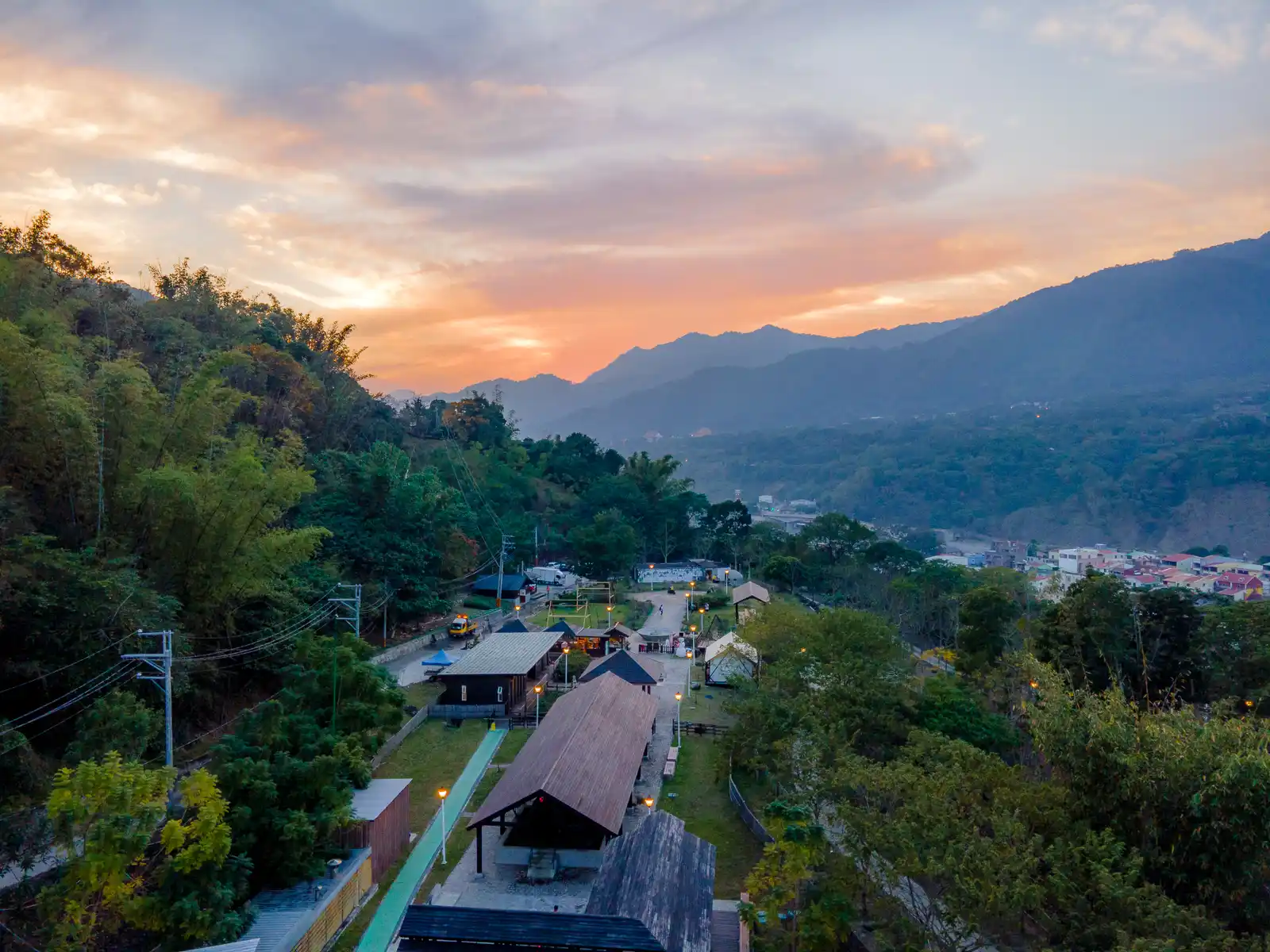
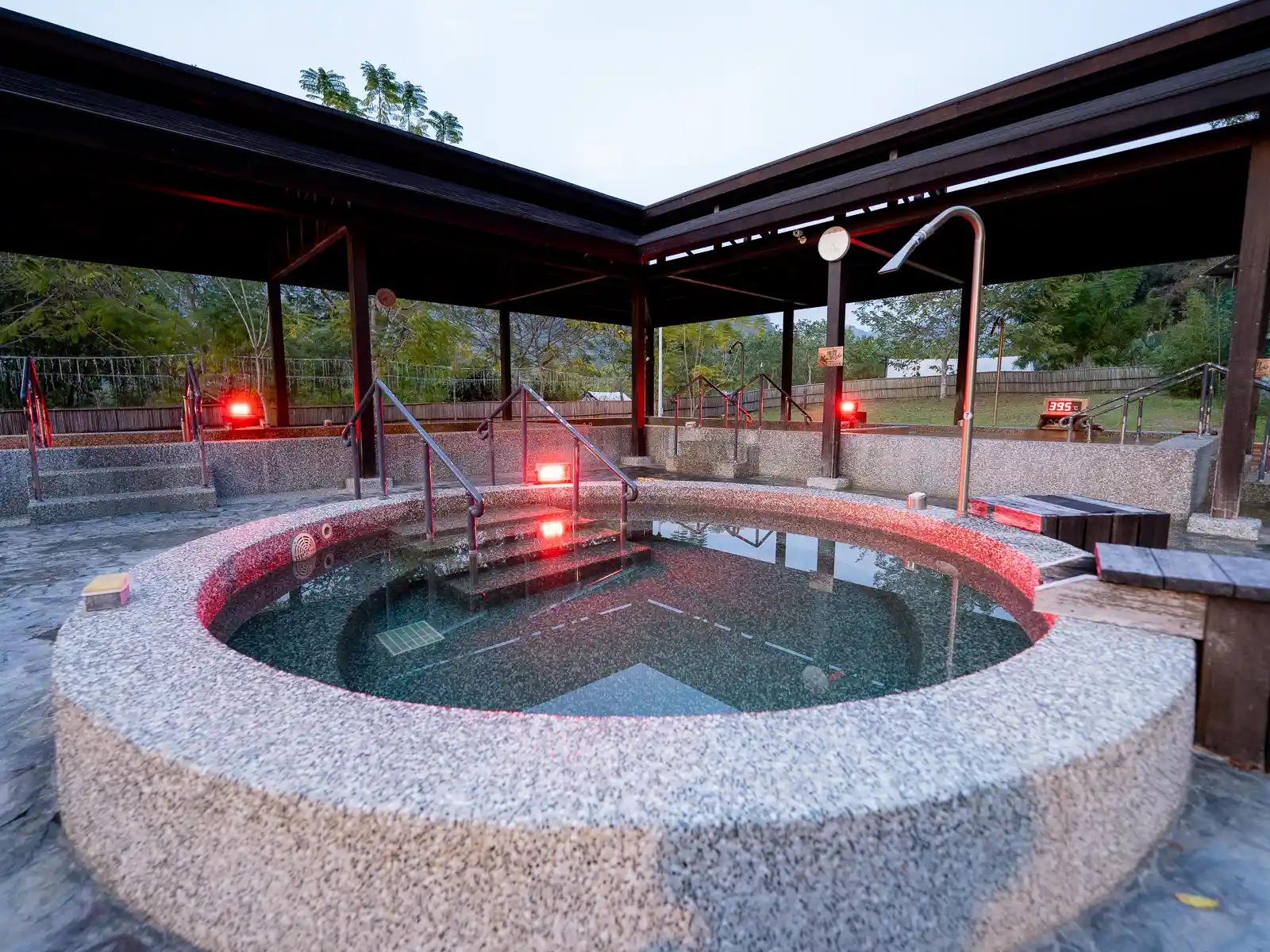
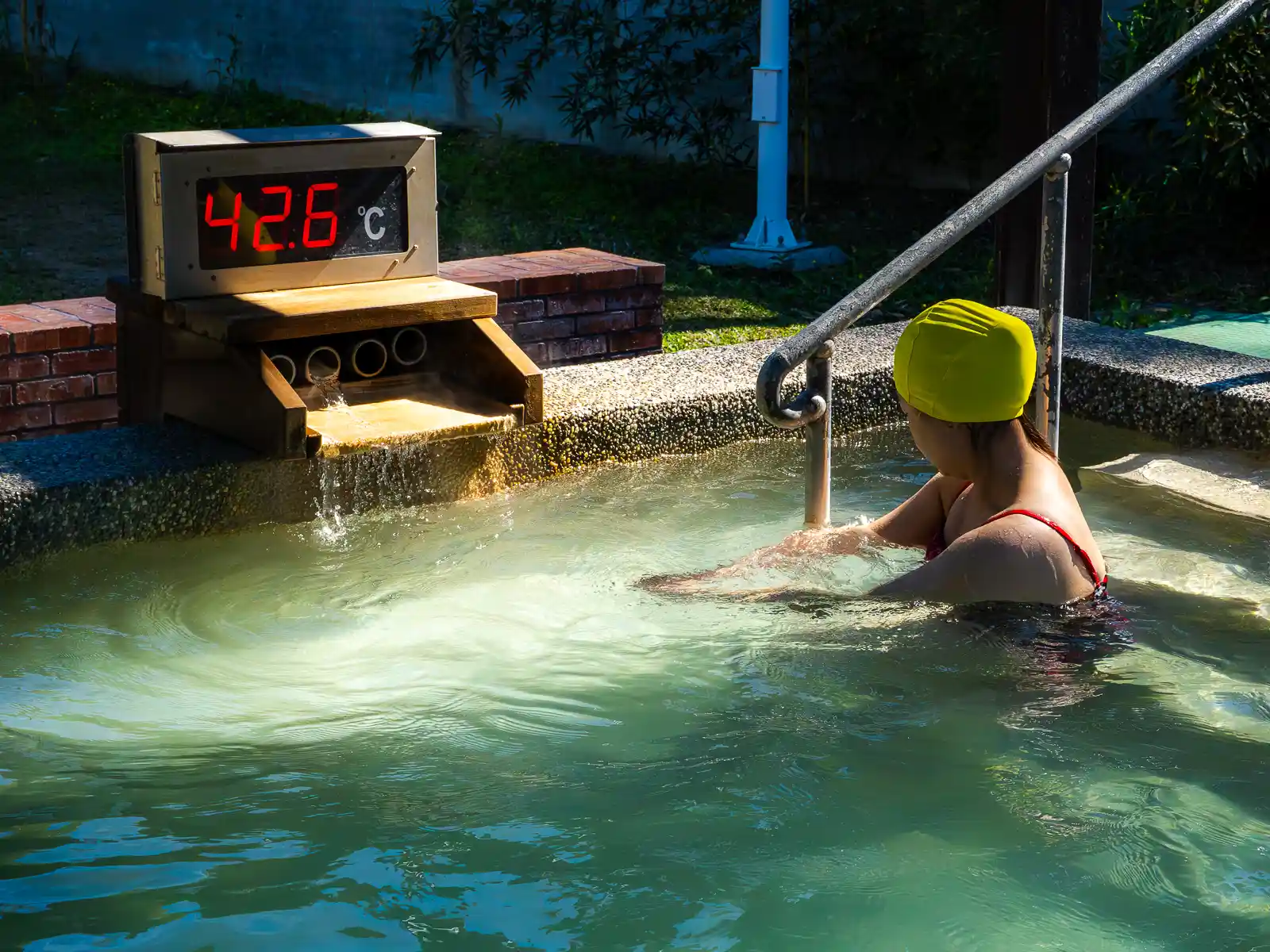
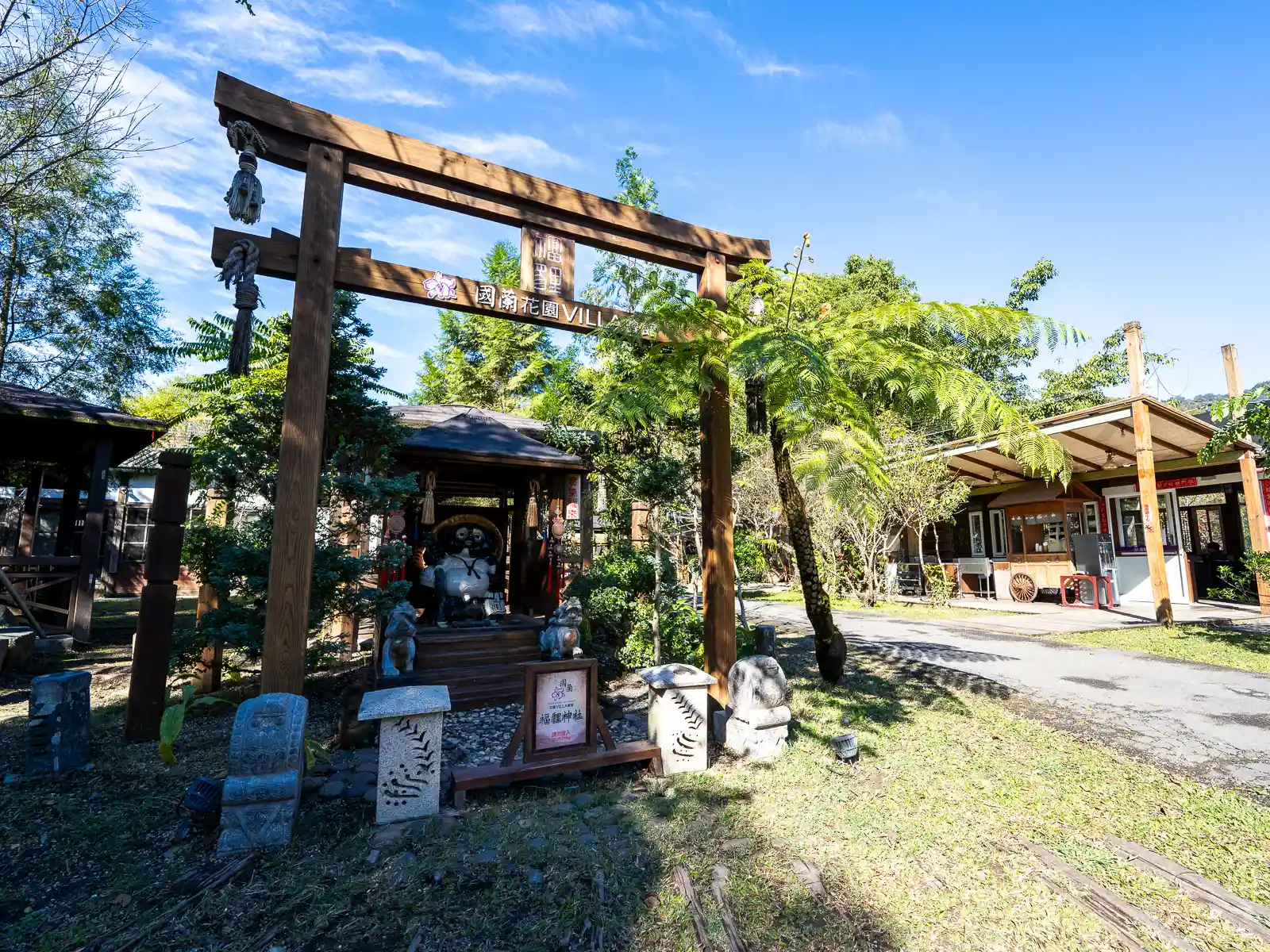
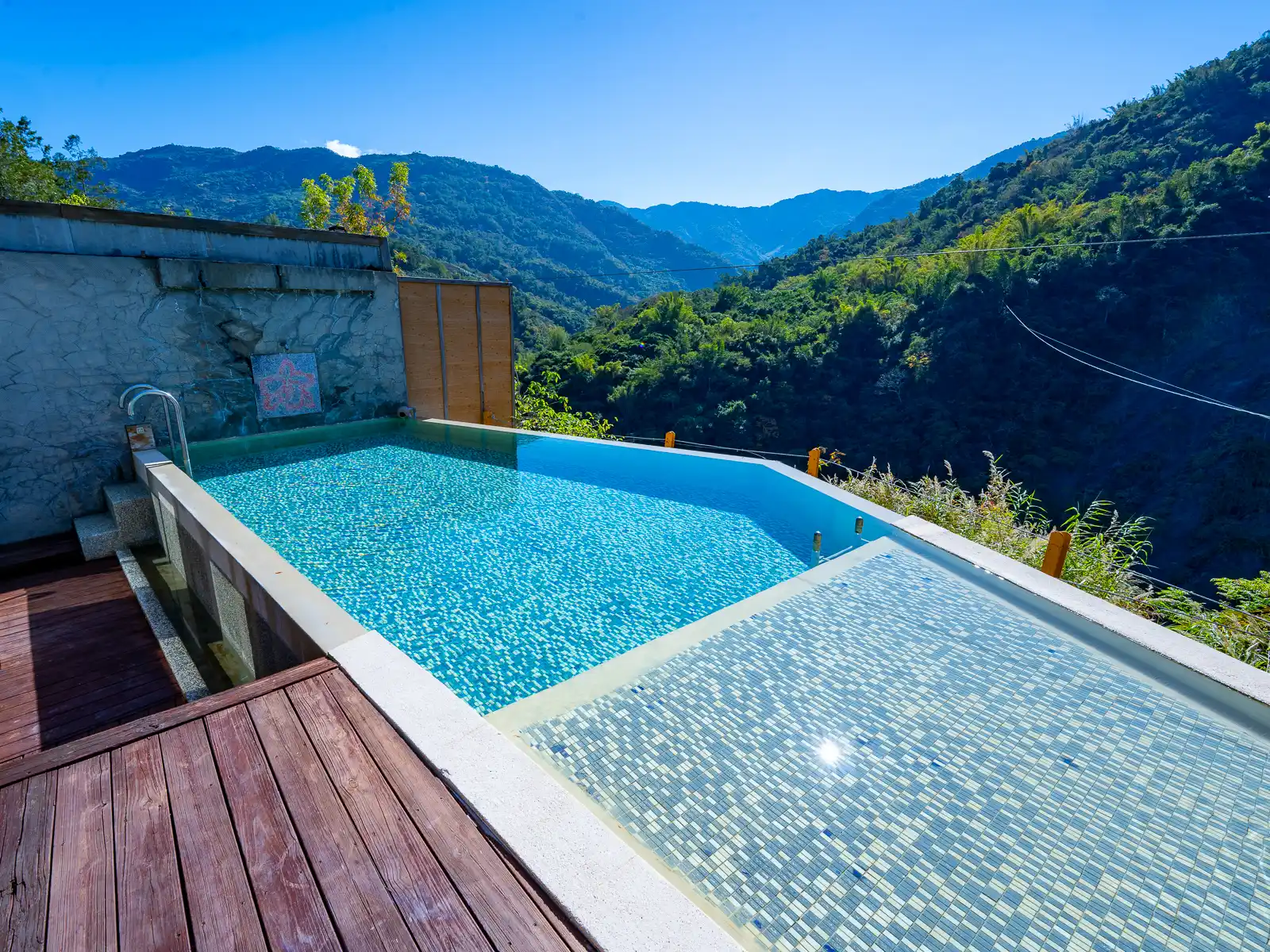
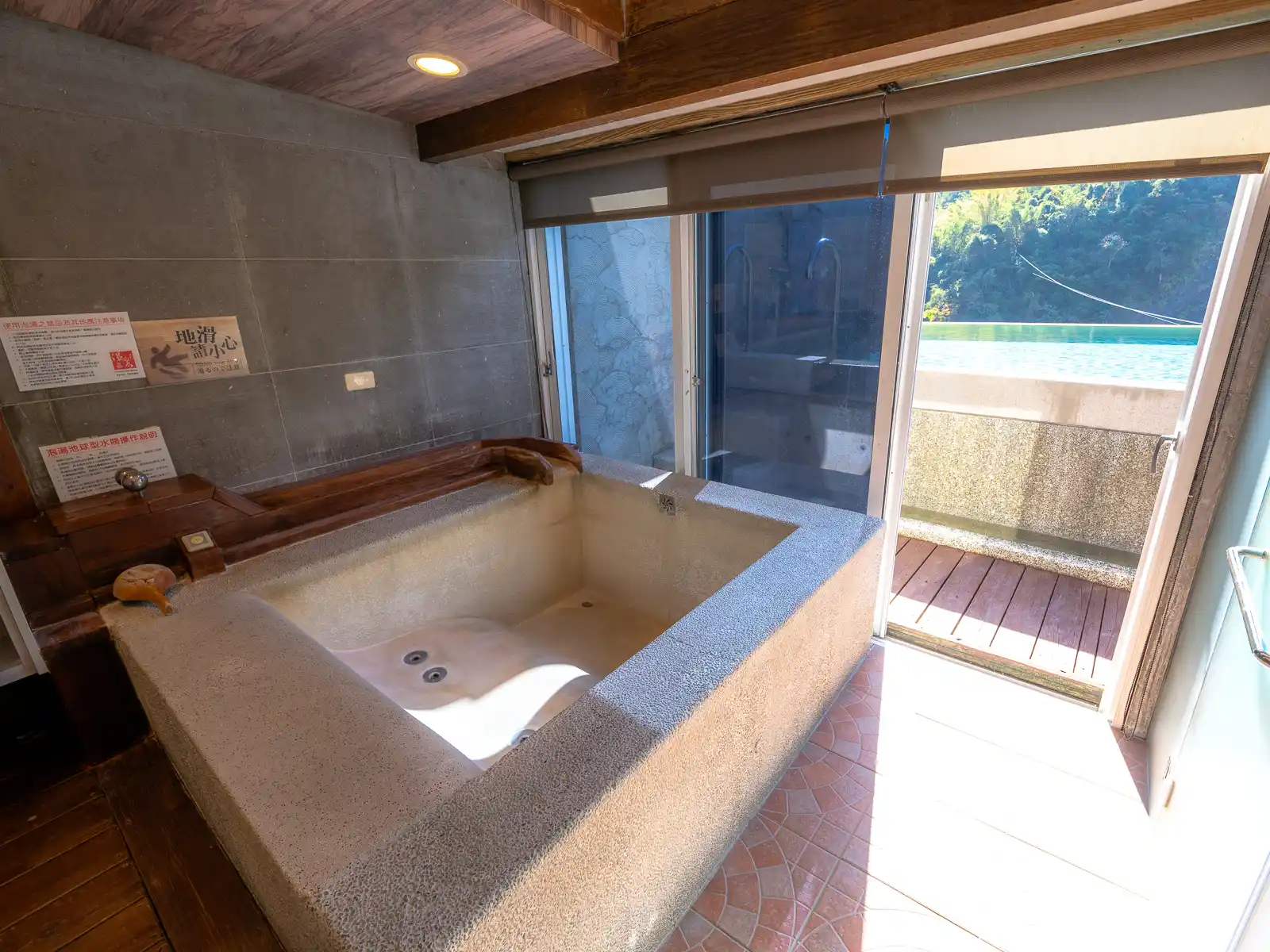
Originally named Penglai or “Paradise” by the Japanese, Baolai used to be a lush, forested area covered with cypress, camphor and zelkova trees. The area has since been developed into one of Kaohsiung’s best hot spring weekend getaways, but the small town still retains its natural idyllic charm.
The area offers commercial hot spring bathing, including overnight lodging, and several natural hot springs that may be accessed via the riverbed.
The soft water from Baolai’s slightly alkaline sodium bicarbonate hot springs leaves the skin feeling silky, and bathers often report they feel refreshed and more youthful after spending a weekend soaking in the warm pools.
KCS Oil-Paper Umbrella Studio

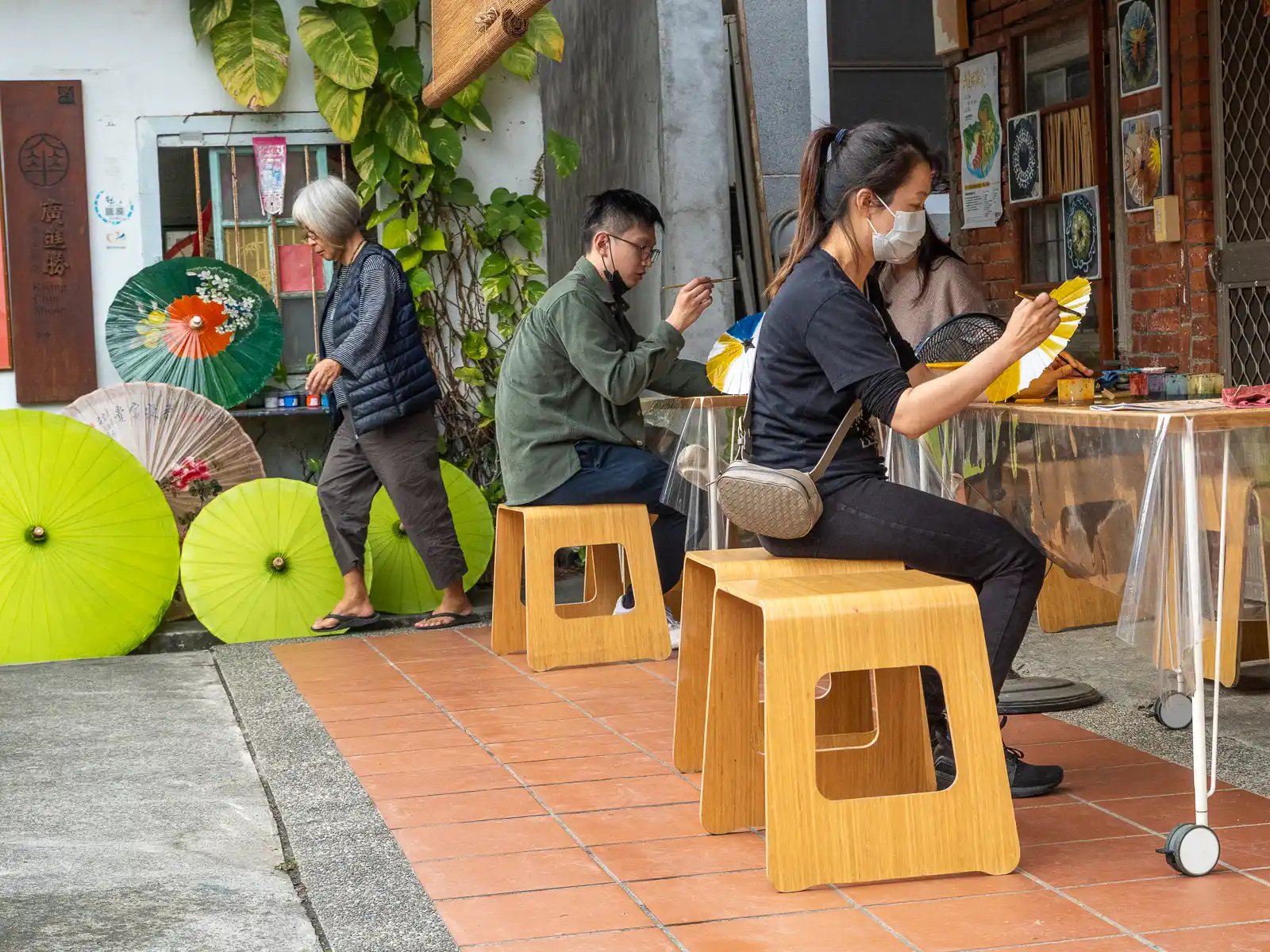
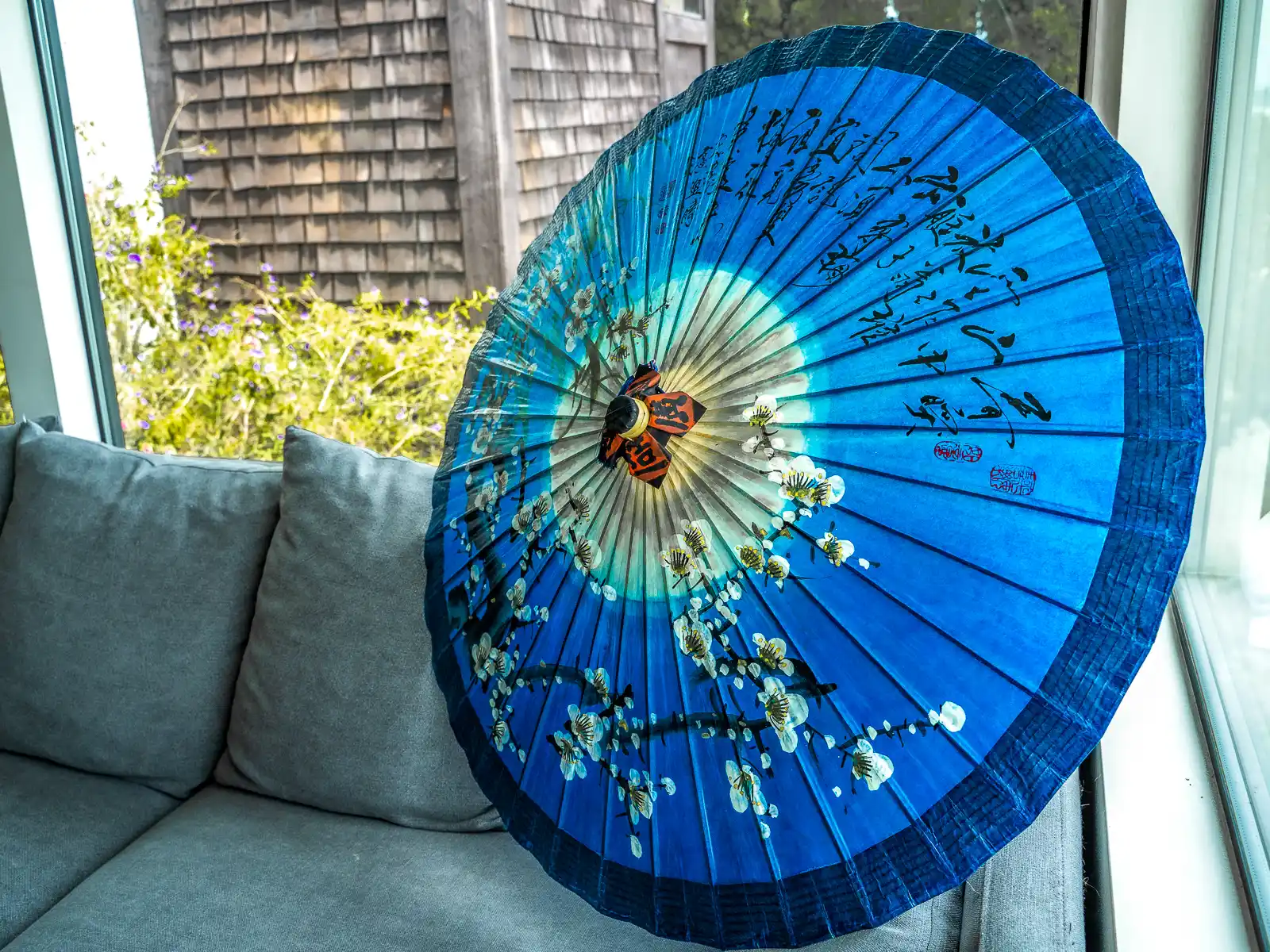
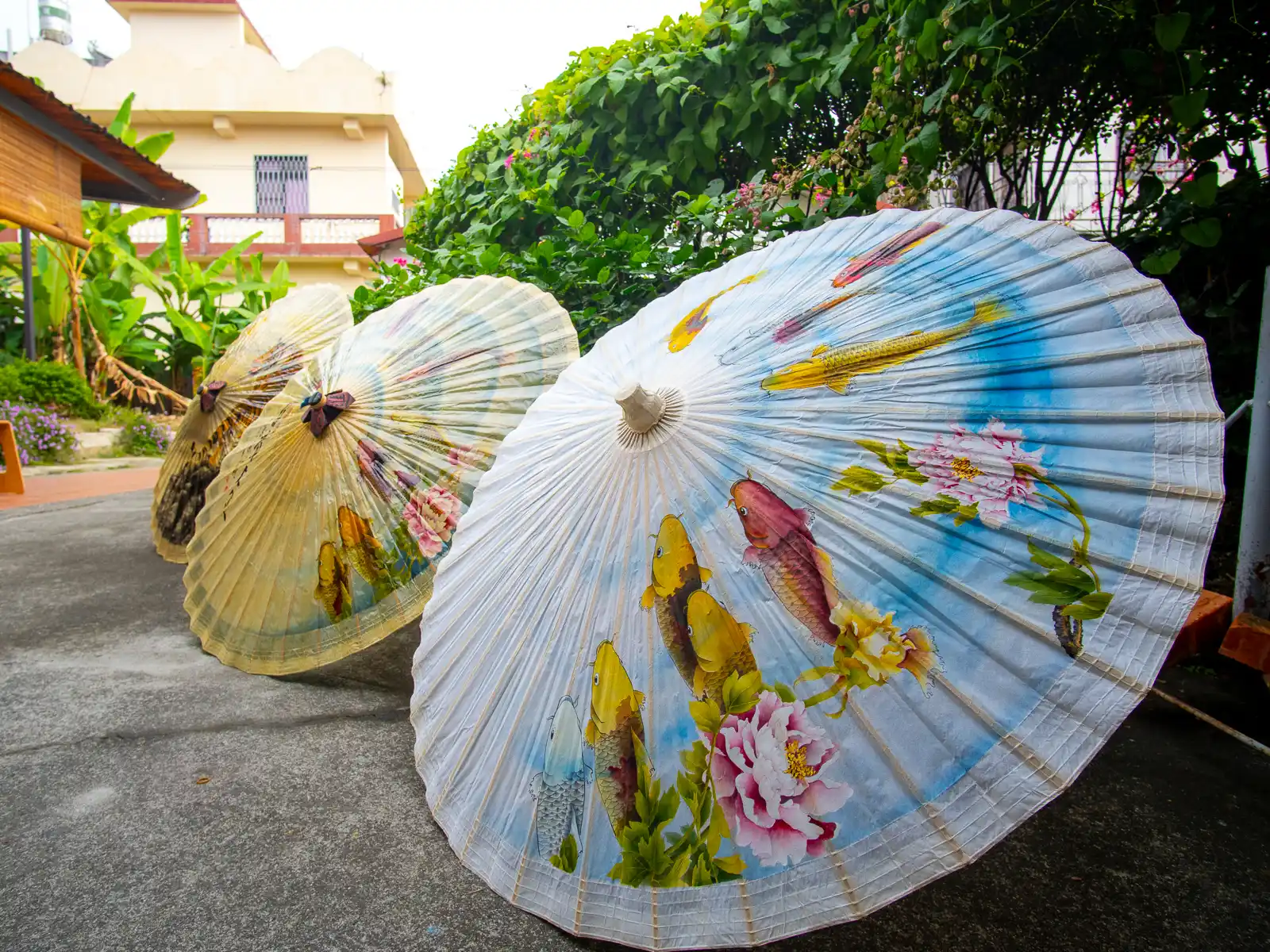
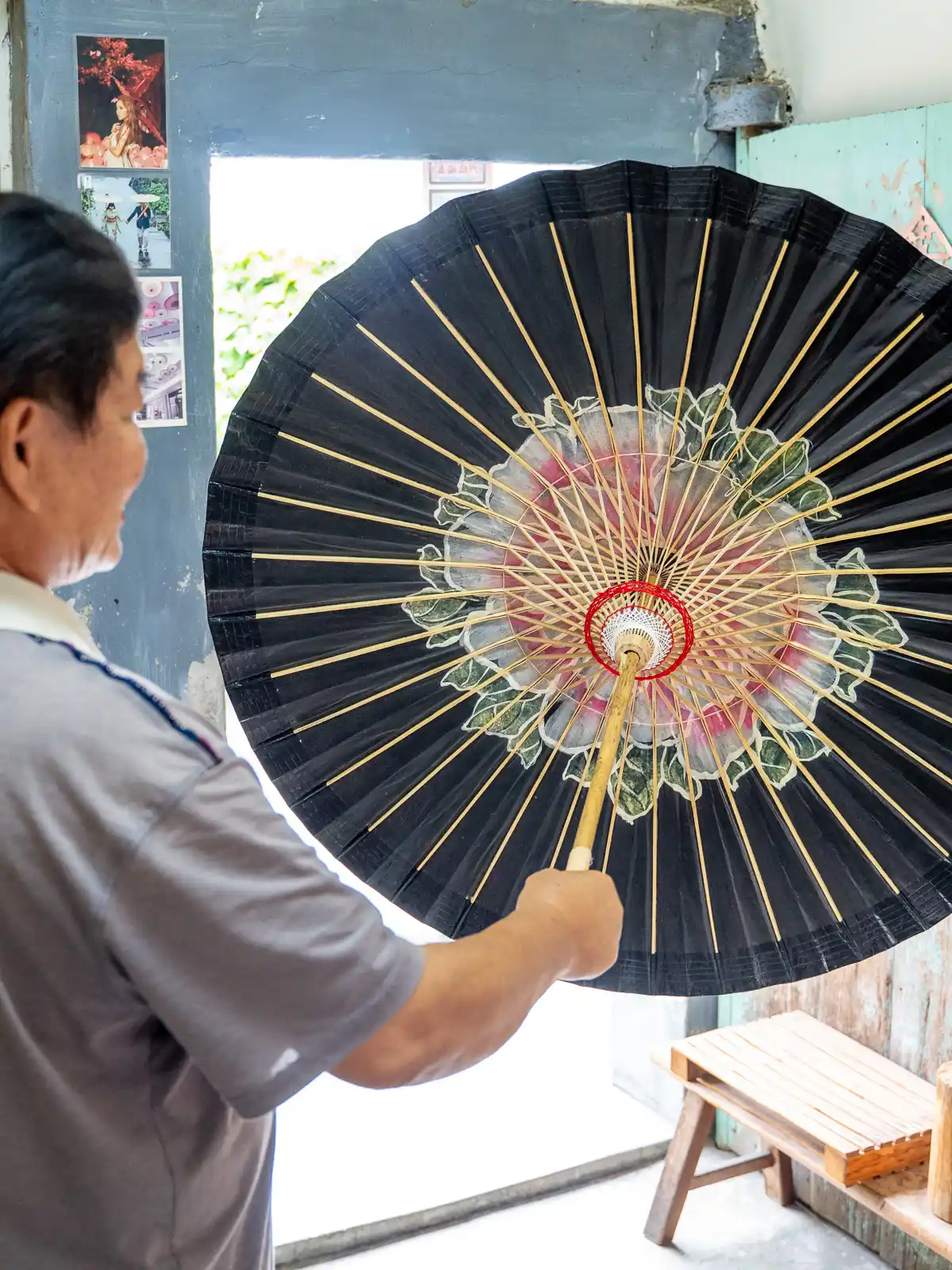
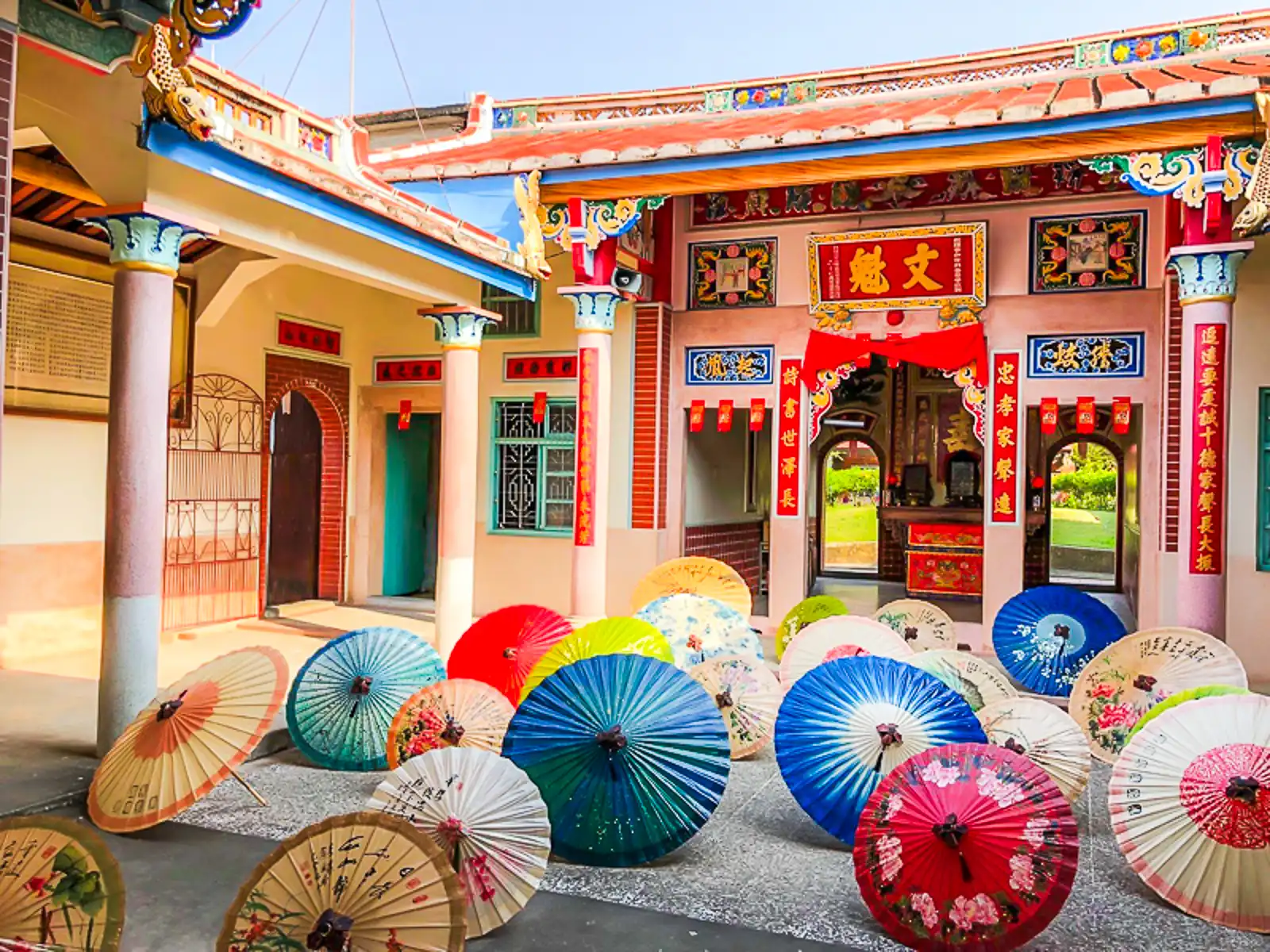
KCS Oil-Paper Umbrella Studio (KCS stands for Kuang Chin Sheng, also written as Guang Jin Sheng) is a small family-run workshop that passionately promotes the traditional industry of hand-painted oil-paper umbrellas.
Before the prevalence of mass-produced plastic umbrellas (now readily available in every convenience store in Taiwan), hand-painted oil-paper umbrellas were both fashionable and practical. While no longer practical, these umbrellas continue to be appreciated and collected for their beauty—they’ve even appeared in modern music videos and have been seen in the hands of fashion icons.
Run by second-generation artisans Lin Rong Jun and Wu Jian Ying, KCS Oil-Paper Umbrella Studio offers DIY umbrella-crafting workshops where you can learn about this once popular and labor-intensive craft. You’re sure to be impressed by the integration of modern manufacturing techniques including but not limited to, indigo dyeing, papercutting, and woodblock printing.
Meinong Folk Village
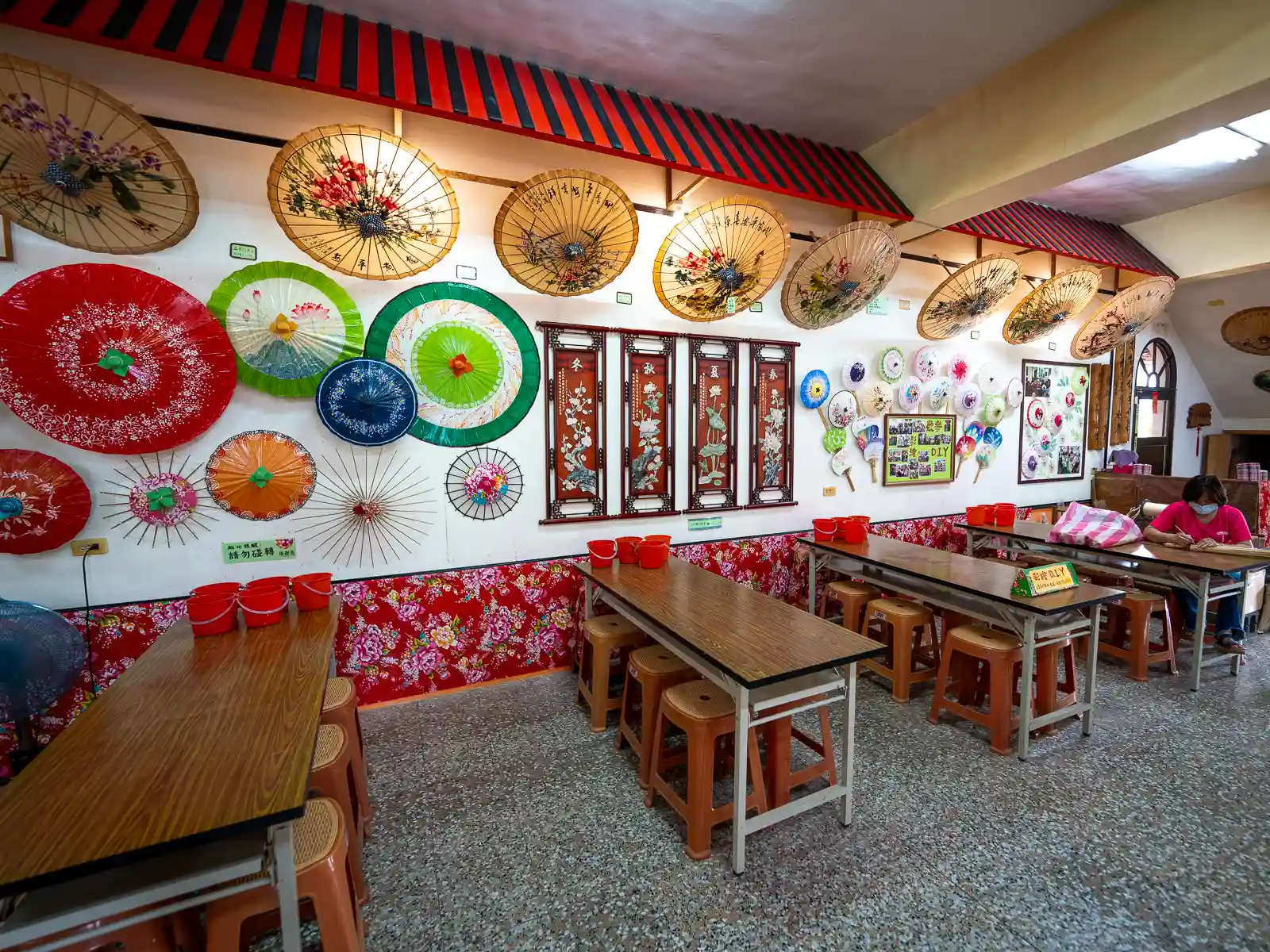
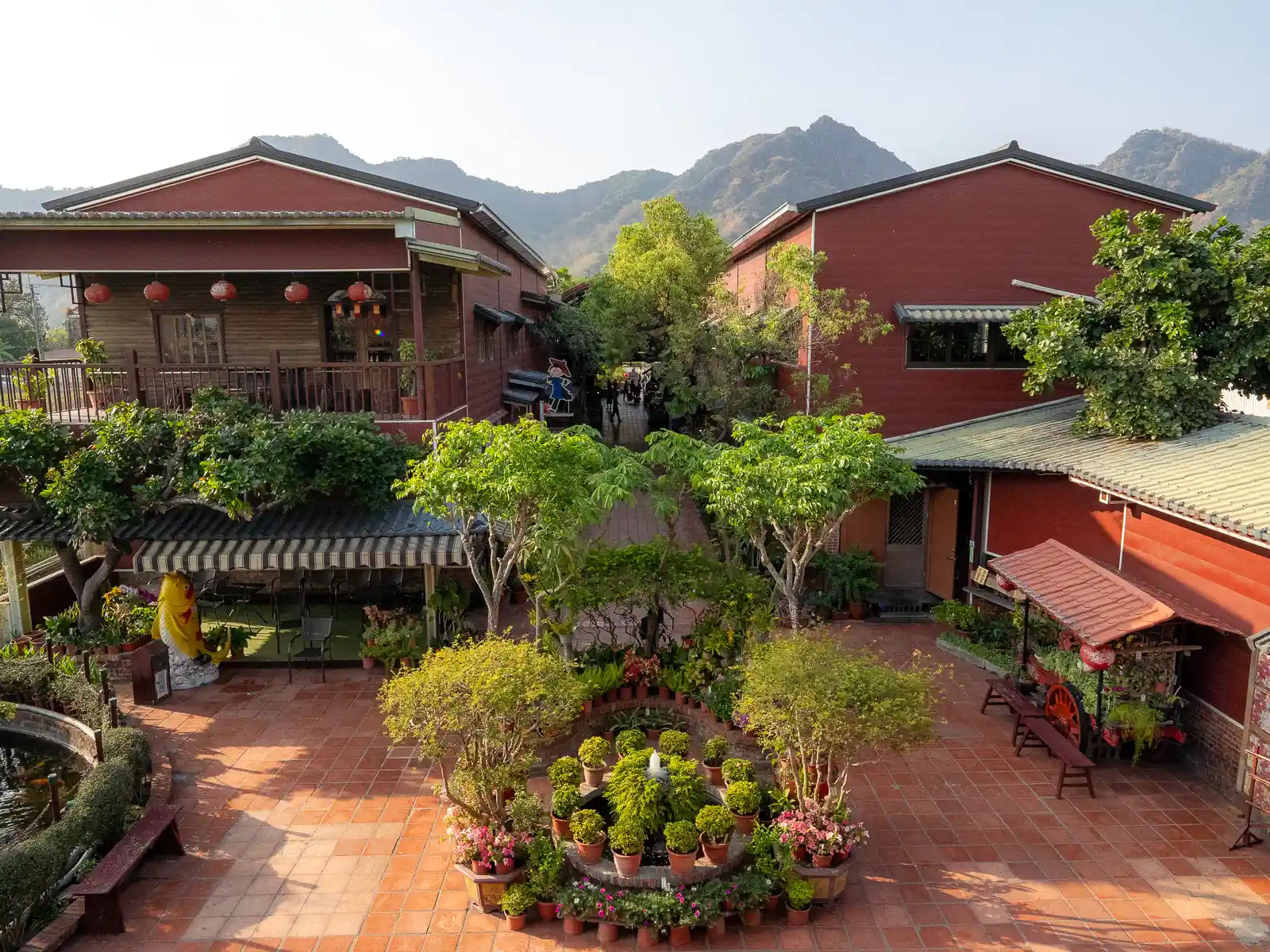
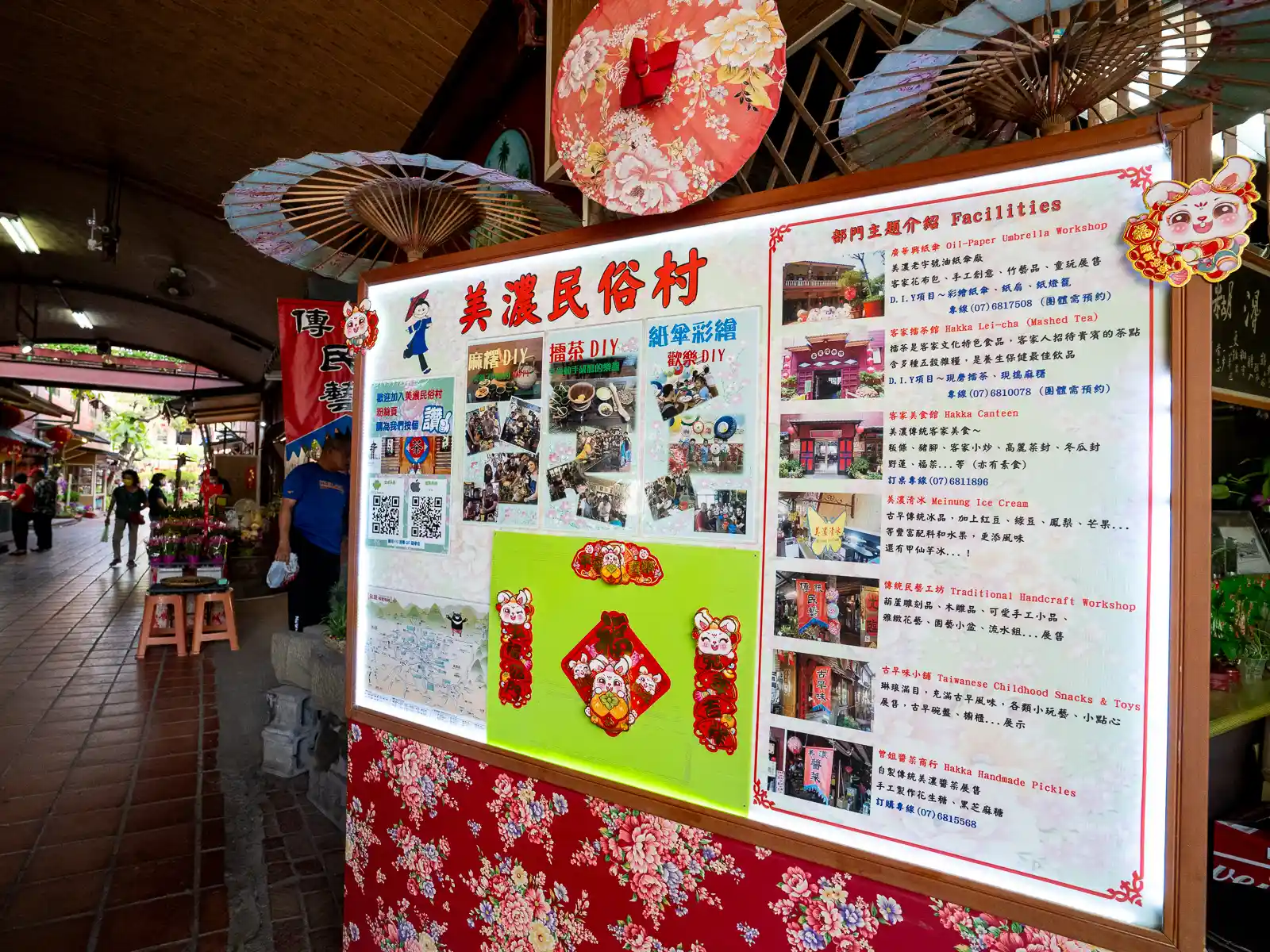
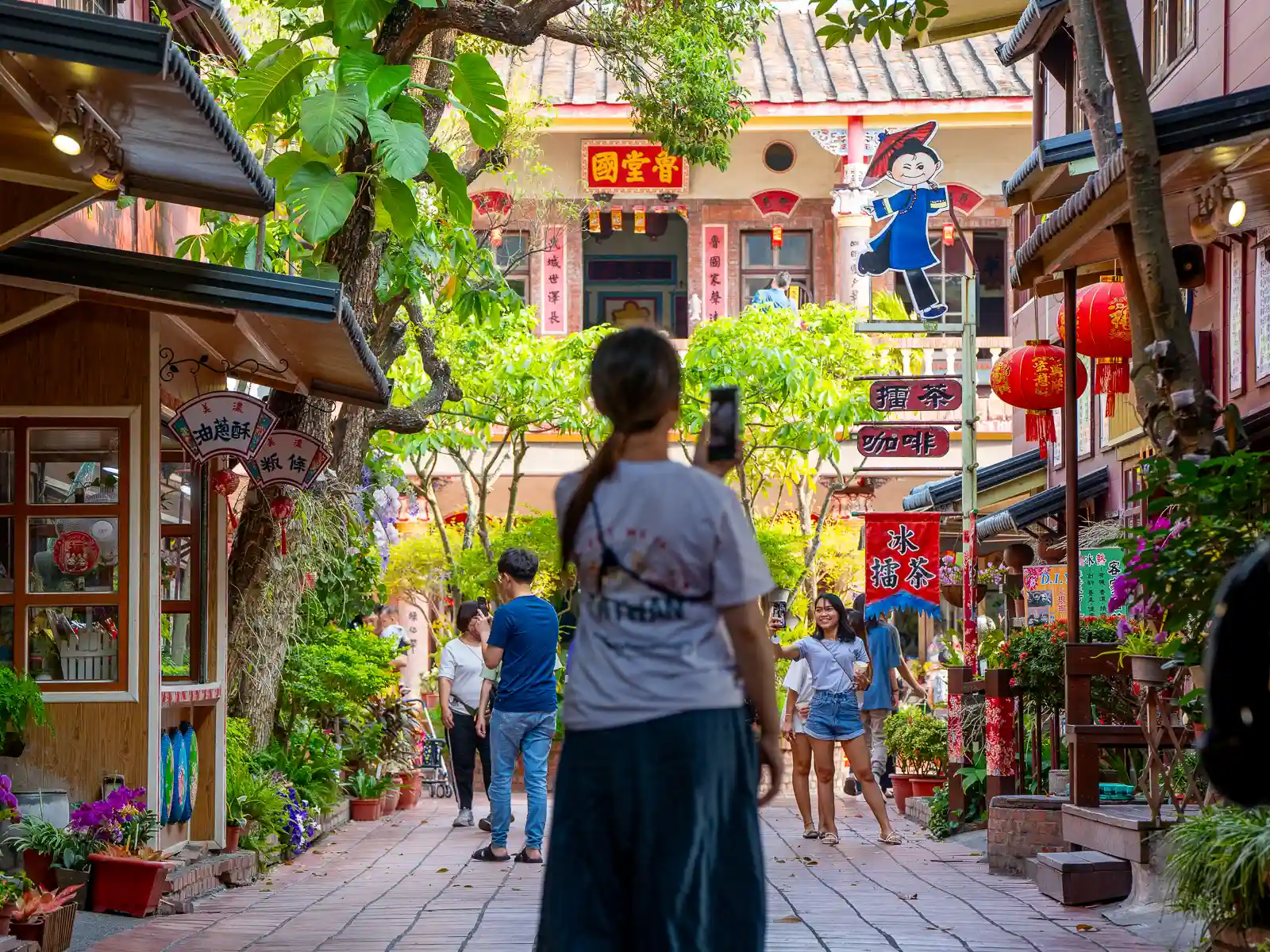
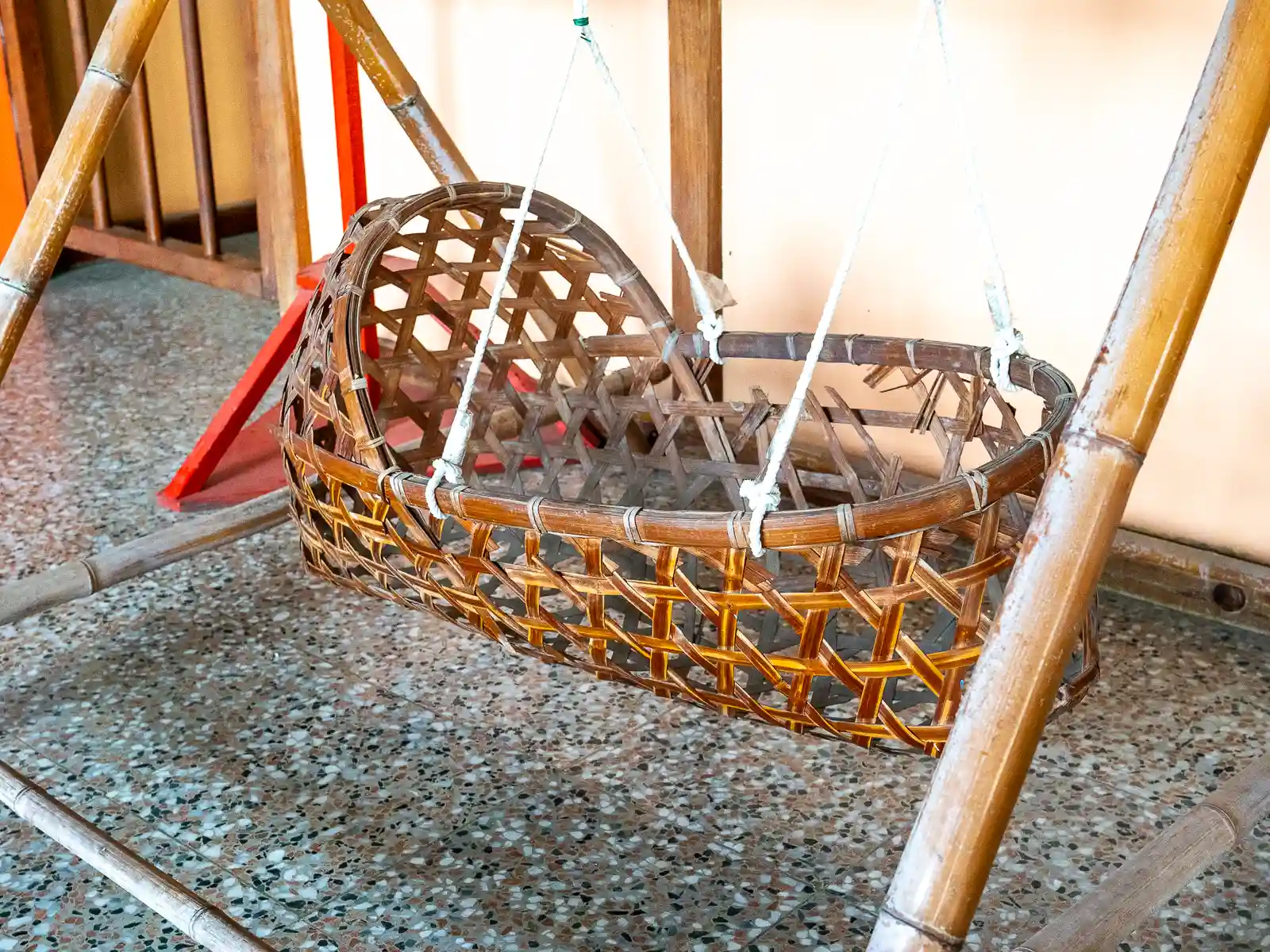

This modern re-creation of an old-fashioned Hakka neighborhood is a one-stop shop to delve deep into Hakka culture. The workshops, eateries, and shopfronts here are run in collaboration with veteran local artisans from the quiet town of Meinong, which is the largest Hakka village in Kaohsiung.
The village’s authentic architecture, which integrates traditional tobacco barns and Hakka courtyards, is effectively a beautiful and entertaining time capsule.
Wander the grounds to sample traditional Hakka “lei cha” (a nutritious drink made from ground tea and beans), or stop by various shops specializing in traditional Hakka products like oil-paper umbrellas, fans, hand-made ceramics, and bamboo baskets. Hakka delicacies like “bantiao” (flat rice noodles), Hakka stir-fry, pork hocks, and shaved ice are also available.
Jin Xing Hang Blue Shirt Shop
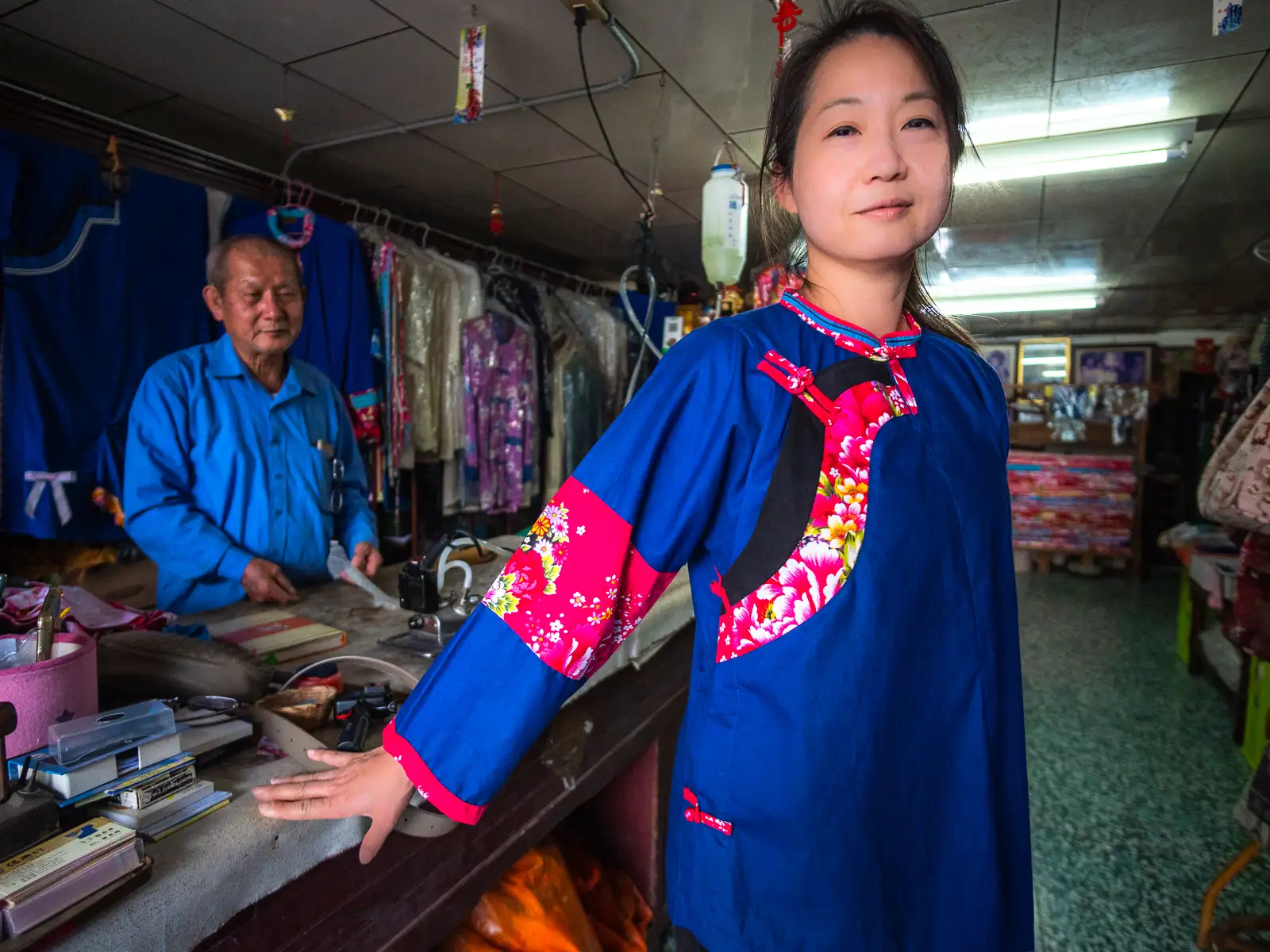
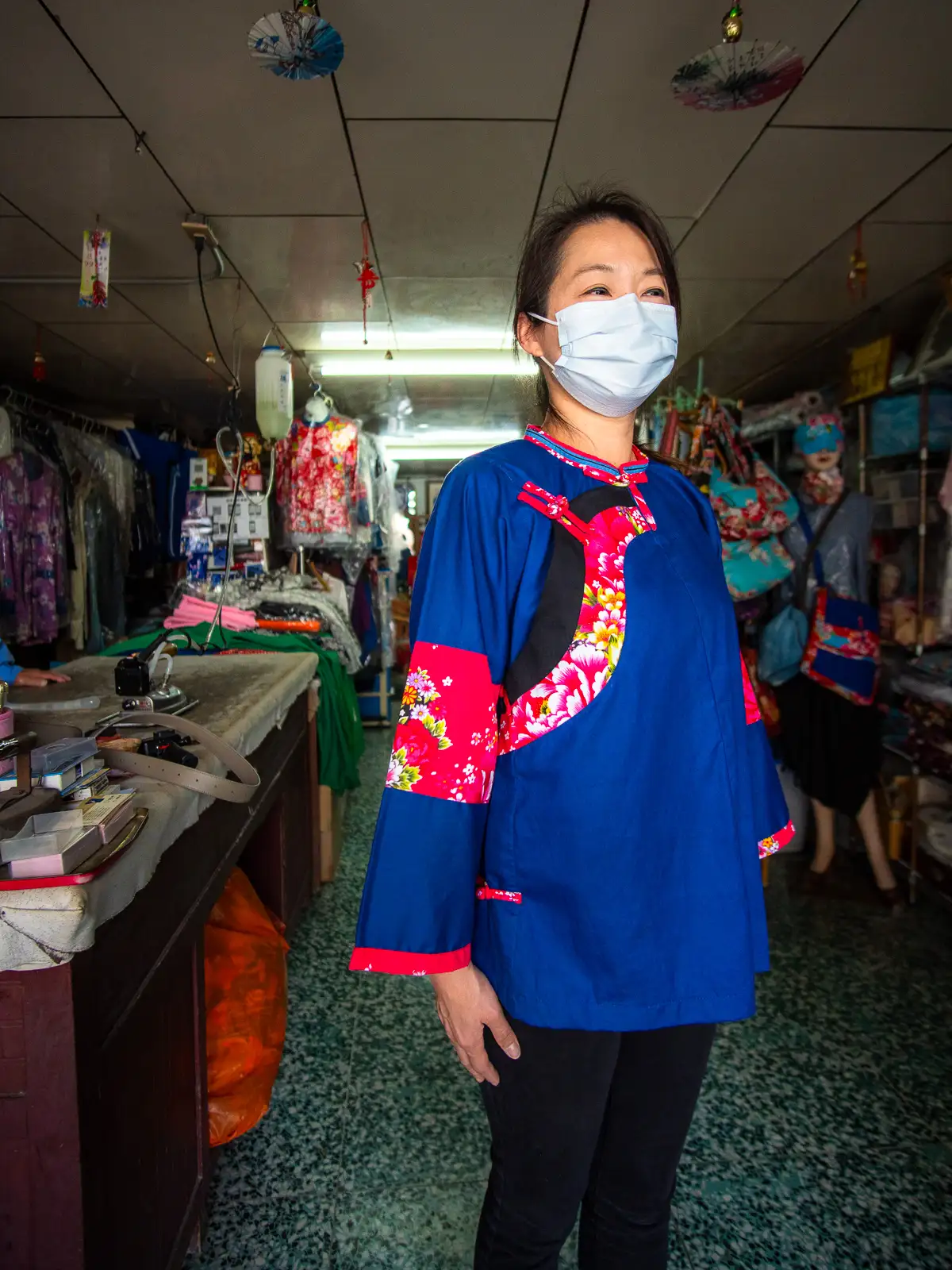
Located on a quiet street in the Hakka town of Meinong, Jin Xing Blue Shirt Shop has been in business for nearly a century. Since its founding in 1929, the shop has been a dedicated producer of traditional Hakka attire, and currently, it remains the only establishment in Taiwan that upholds the tradition of meticulously handcrafting Hakka blue shirts.
Just like kimonos in Japan, naturally dyed indigo shirts are a traditional outfit of Taiwanese Hakka. Worn by Hakka women who worked in the fields, these shirts protected them from getting dirty during their day. The traditional dyeing process utilizes foraged plants from the mountains and requires at least eight dyeing sessions and a full day to dye a piece of cloth, making these items precious and cherished.
Shop founder and master craftsmen Xie Jinglai passed away several years ago, having lived to the ripe age of 101 (there’s something to be said about living a simple life in the country). The shop is now operated by his son and daughter-in-law, who have taken over design and tailoring.
Hakka Flat Rice Noodles – “Bantiao”
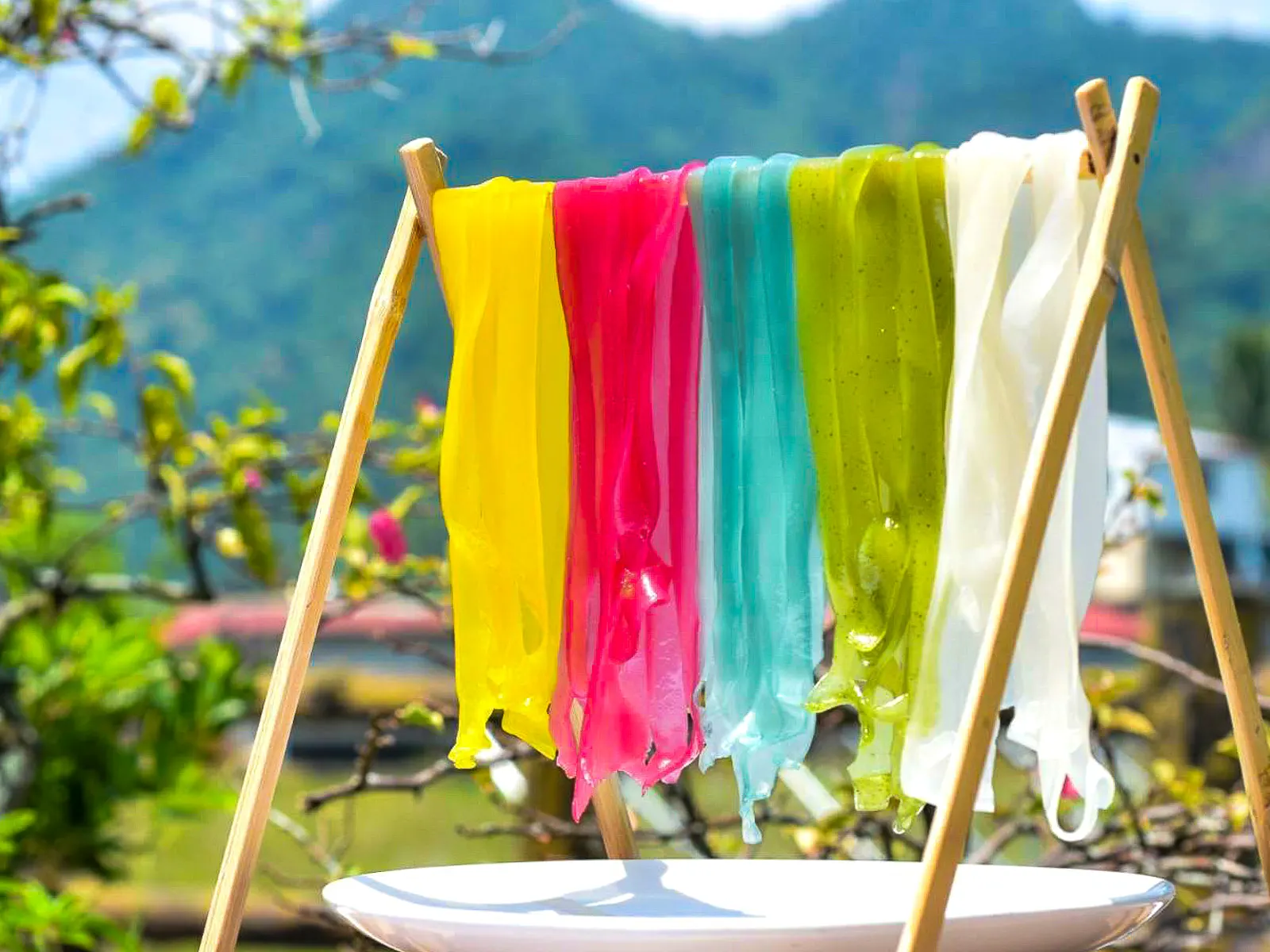
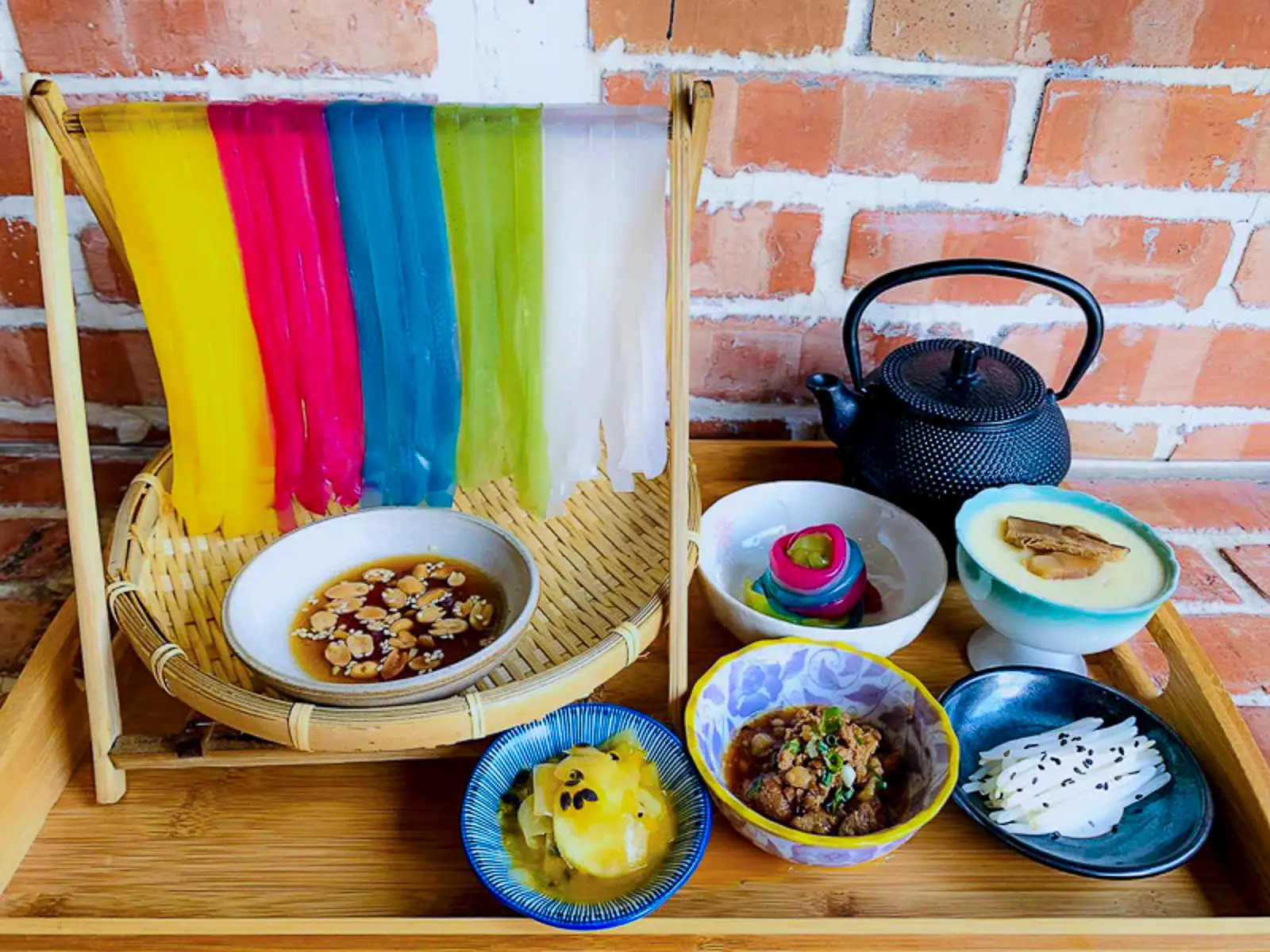
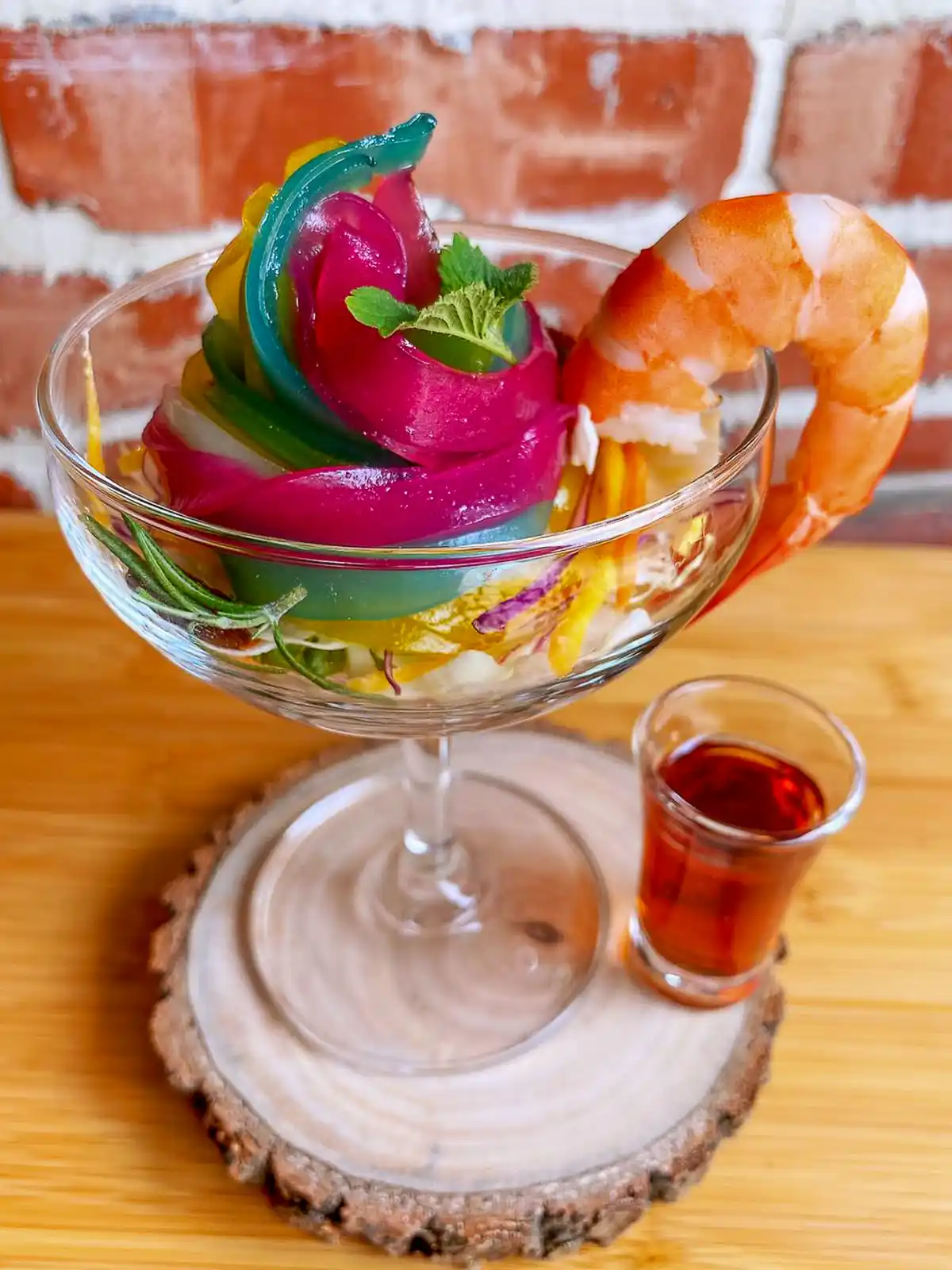
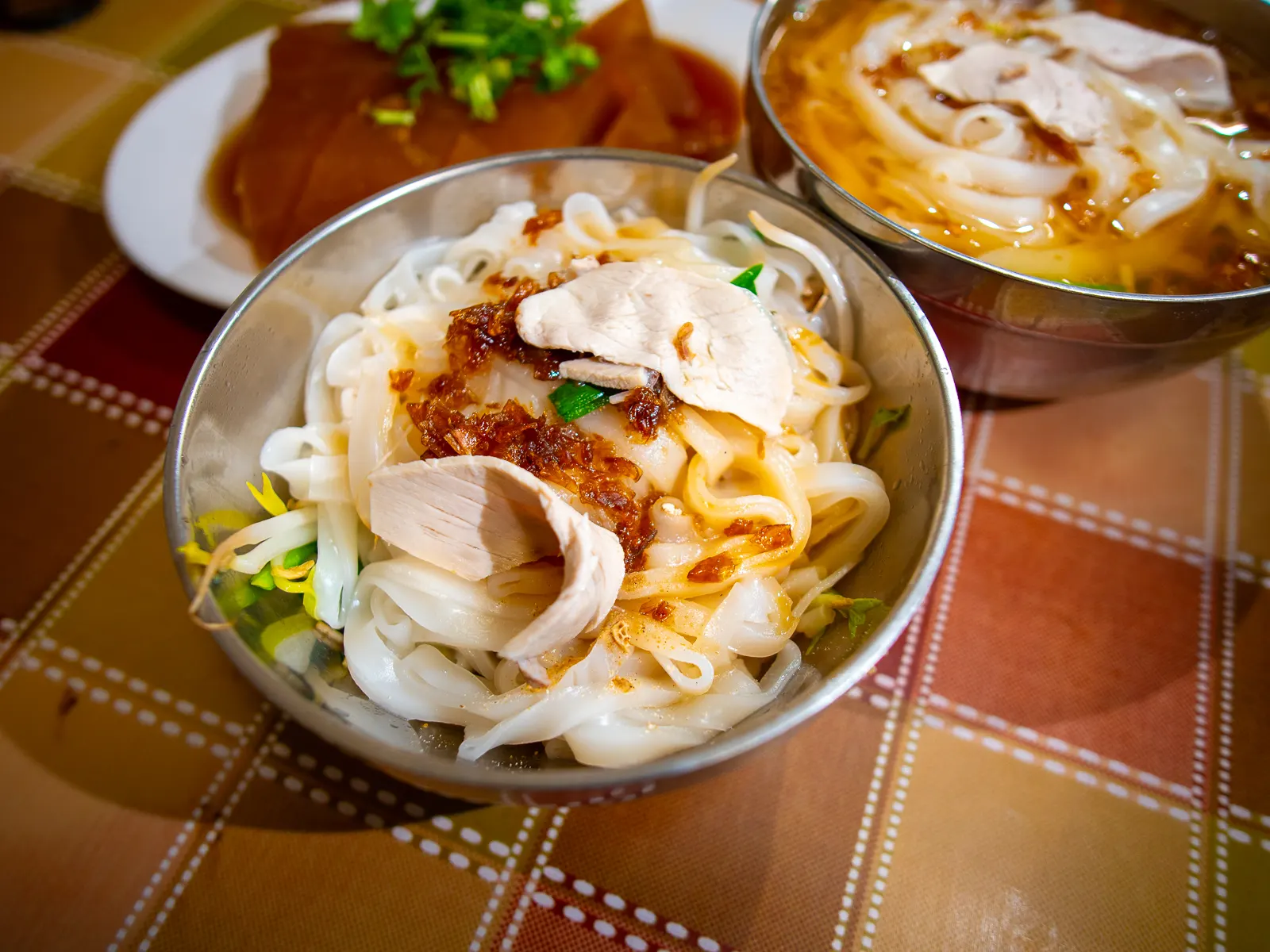
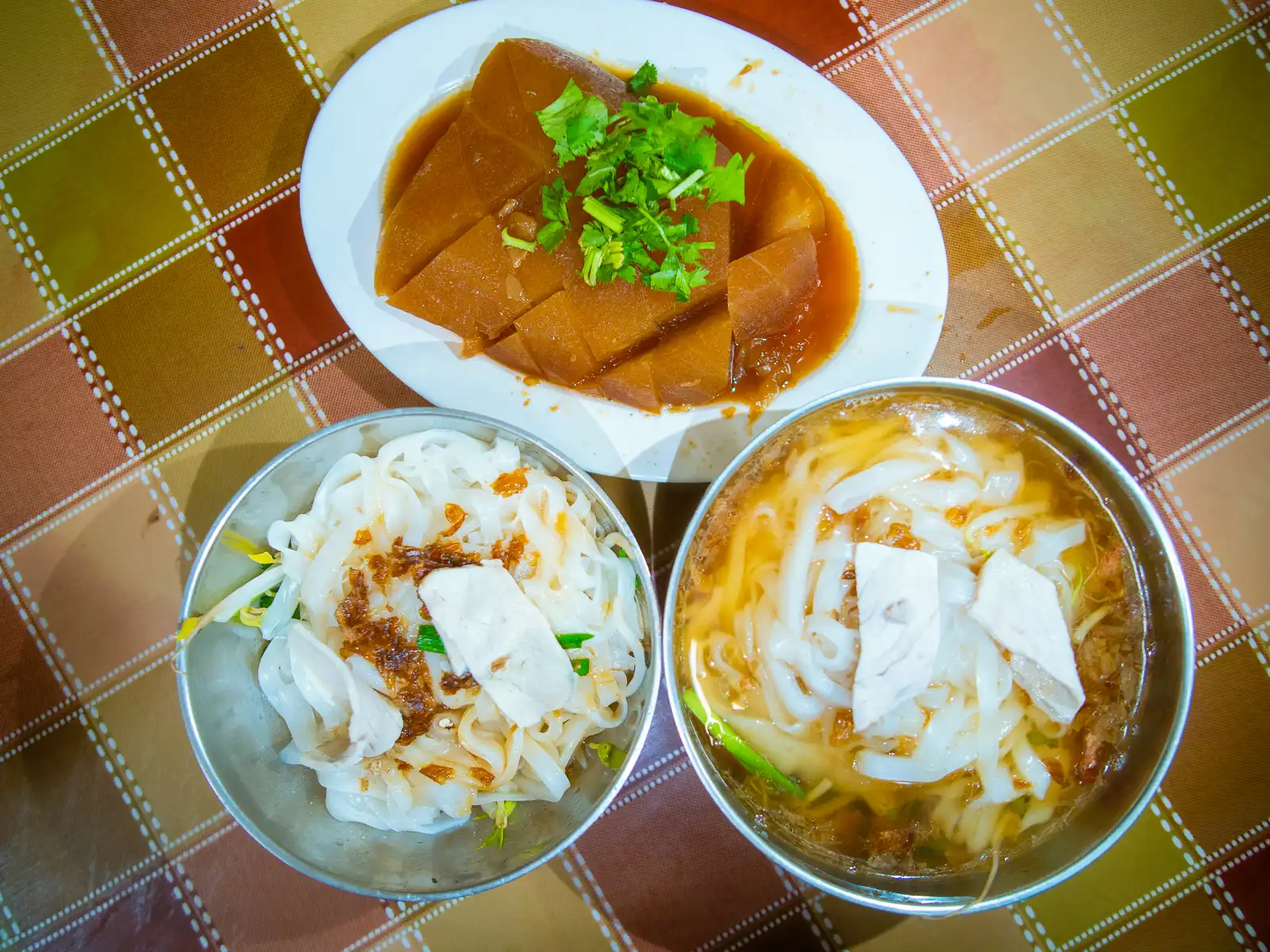
Flat rice noodles, known locally as “bantiao”, are more than just a culinary delight; they are a testament to the resilience and ingenuity of the Hakka people. These noodles, which originated during a tumultuous period of war-induced Hakka migration, were the community’s answer to the challenges of food scarcity in Taiwan’s early agricultural era. By transforming rice grains into easily preserved noodles, the Hakka provided a nourishing breakfast staple for their villages.
Today, Meixing Street, often referred to as “rice noodle street”, is home to time-honored establishments like Lin’s Hakka Flat Rice Noodles, which has been serving this cherished dish since 1966. In contrast, innovative spots like Spectrum House offer a modern twist with their vegetable-dyed rainbow-colored flat rice noodles, reflecting the dynamic evolution of Hakka cuisine in Southern Taiwan.
Tianliao Moon World
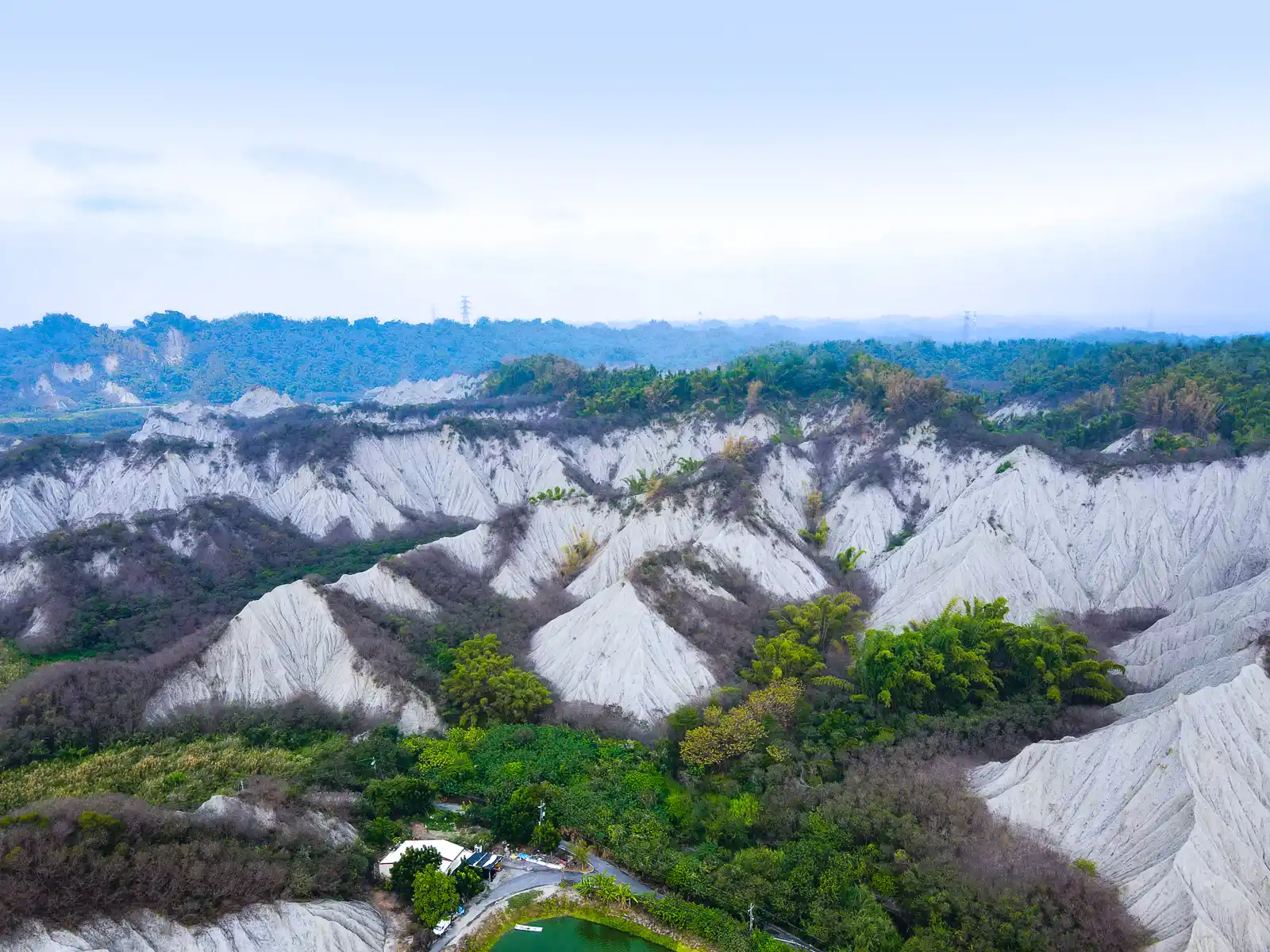
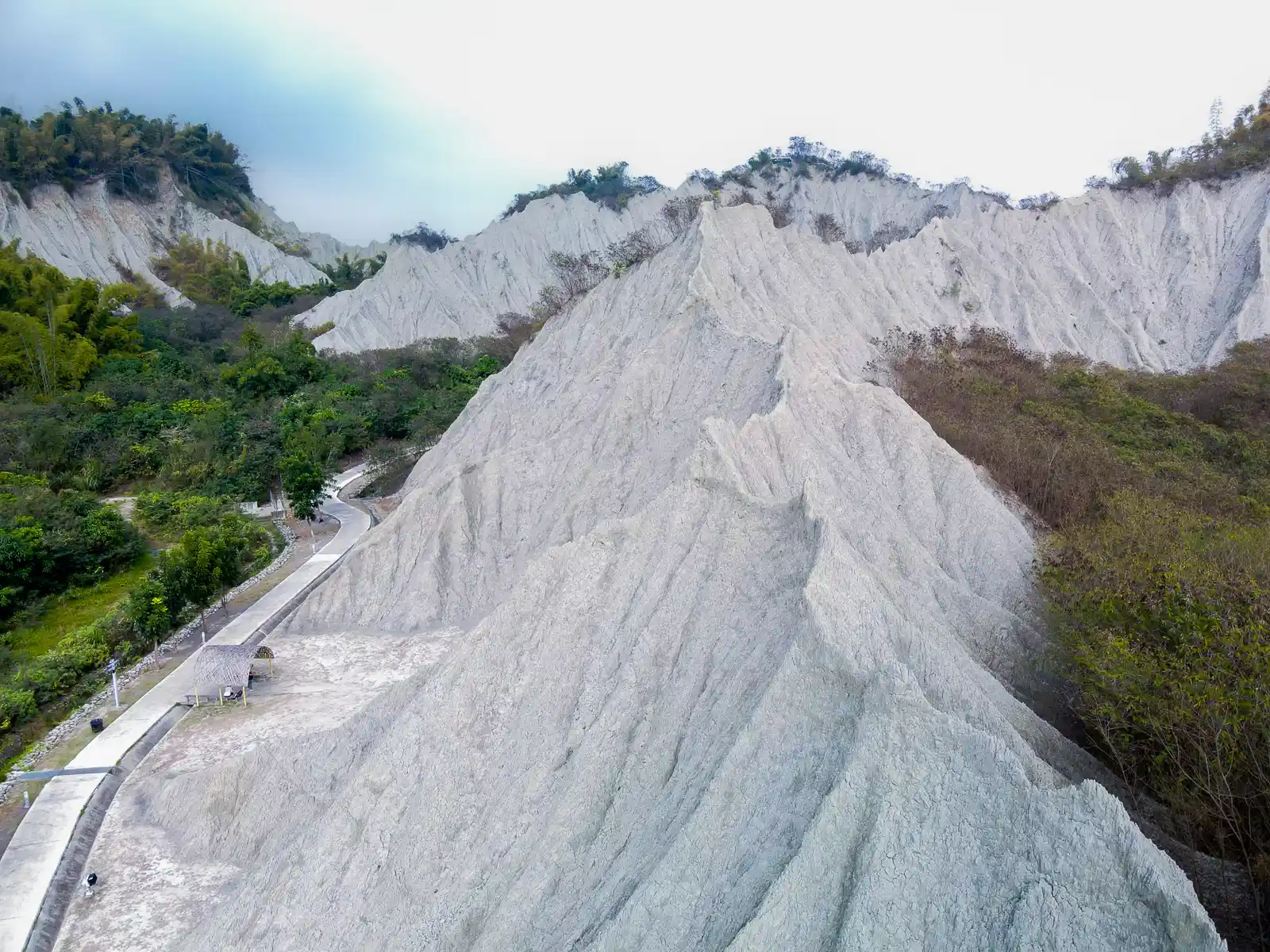
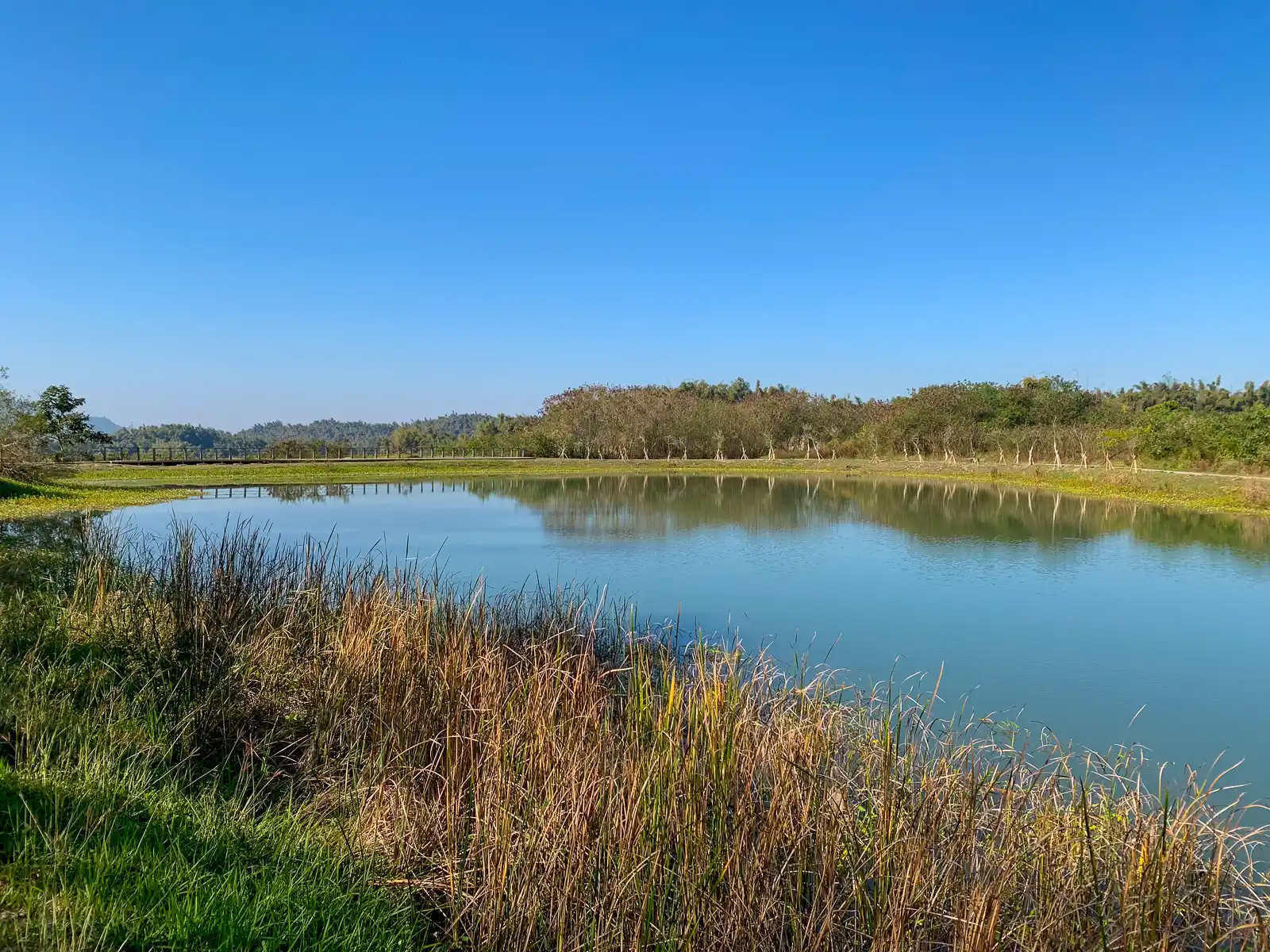
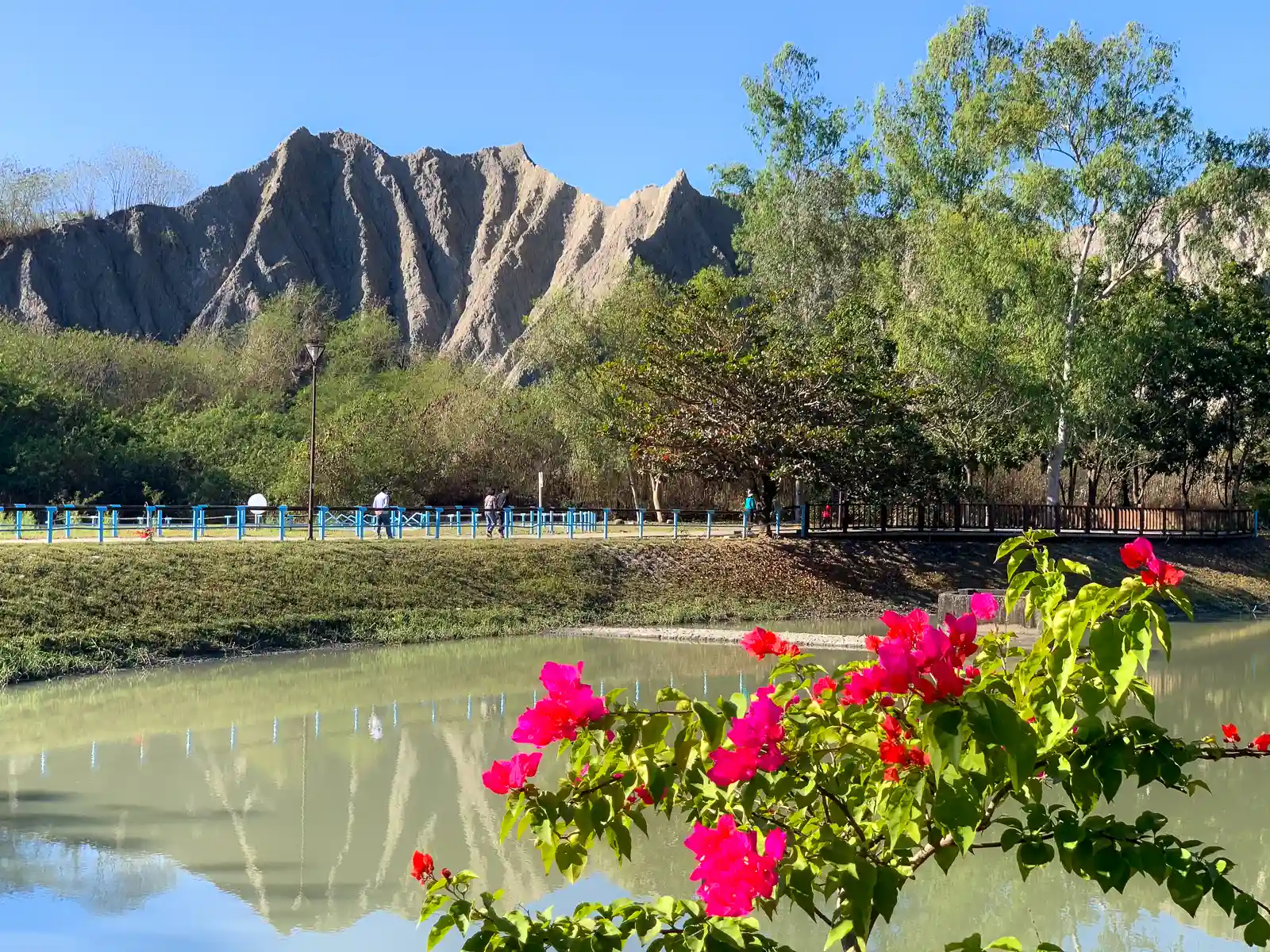
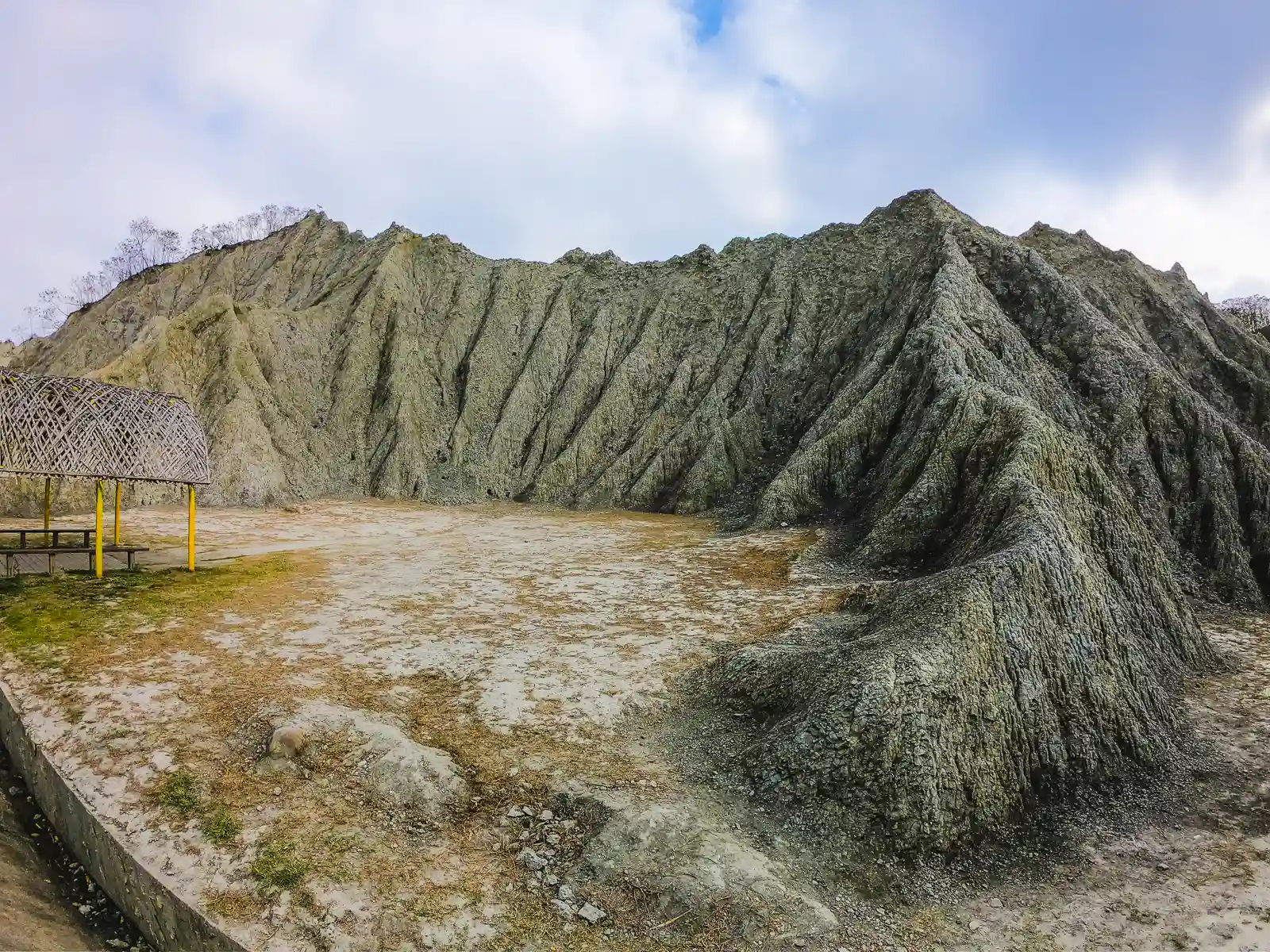
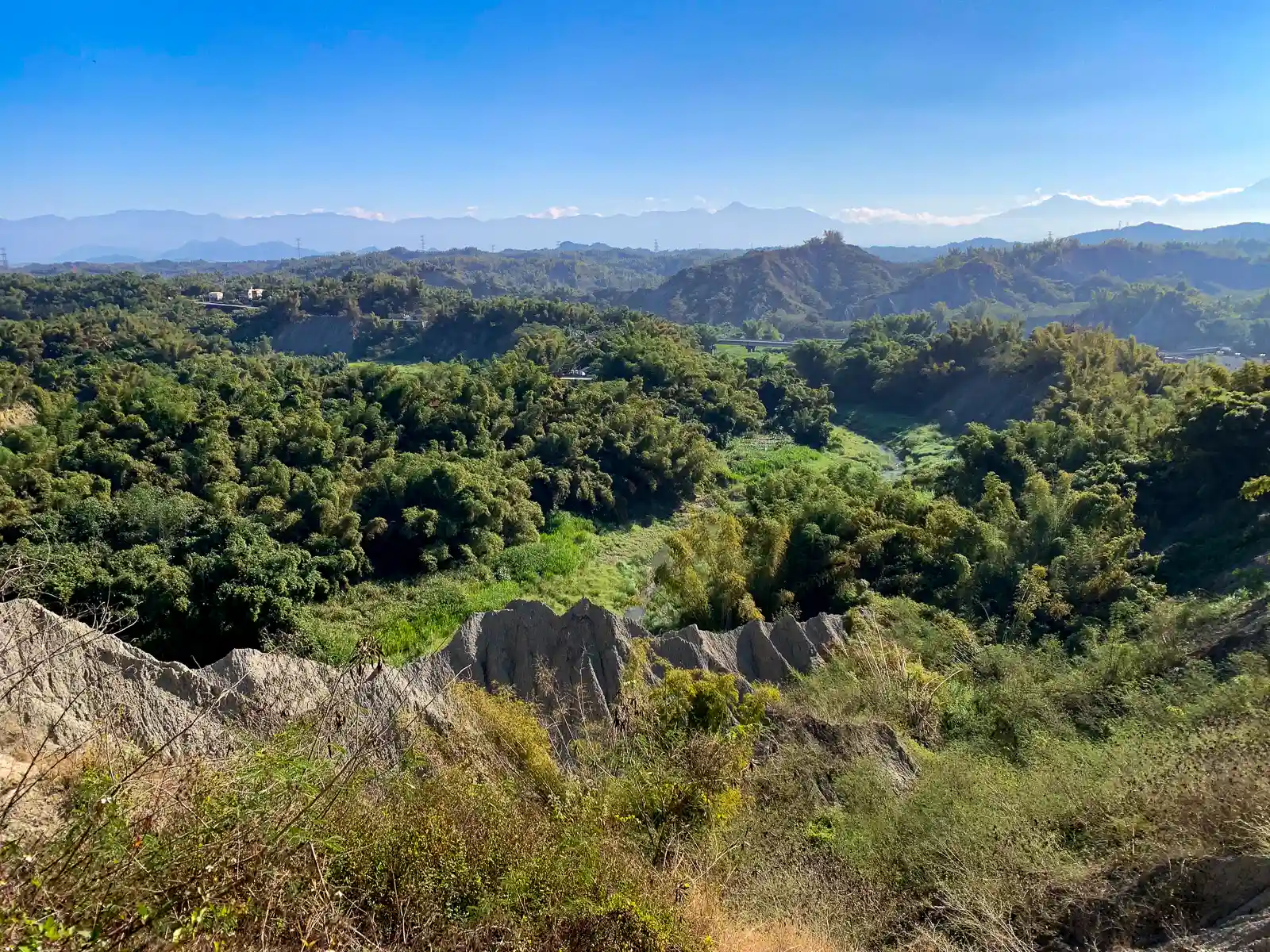
Tianliao Moon World is a beautiful stretch of badlands that is popular with photographers, families, and amateur geologists.
Spanning from Zuojhen District in Tainan to Tianliao District and Yanchao District in Kaohsiung, Tianliao Moon World features a dramatically eroded landscape with many unique geological formations and its own ecosystem.
The high salt content of this once marine land makes it inhospitable to all but the most resilient of plant species. Since its creation, years of wind and water erosion have carved out a network of dramatic spines and razor-thin ridgelines throughout the badlands.
Tianliao Stone Temple
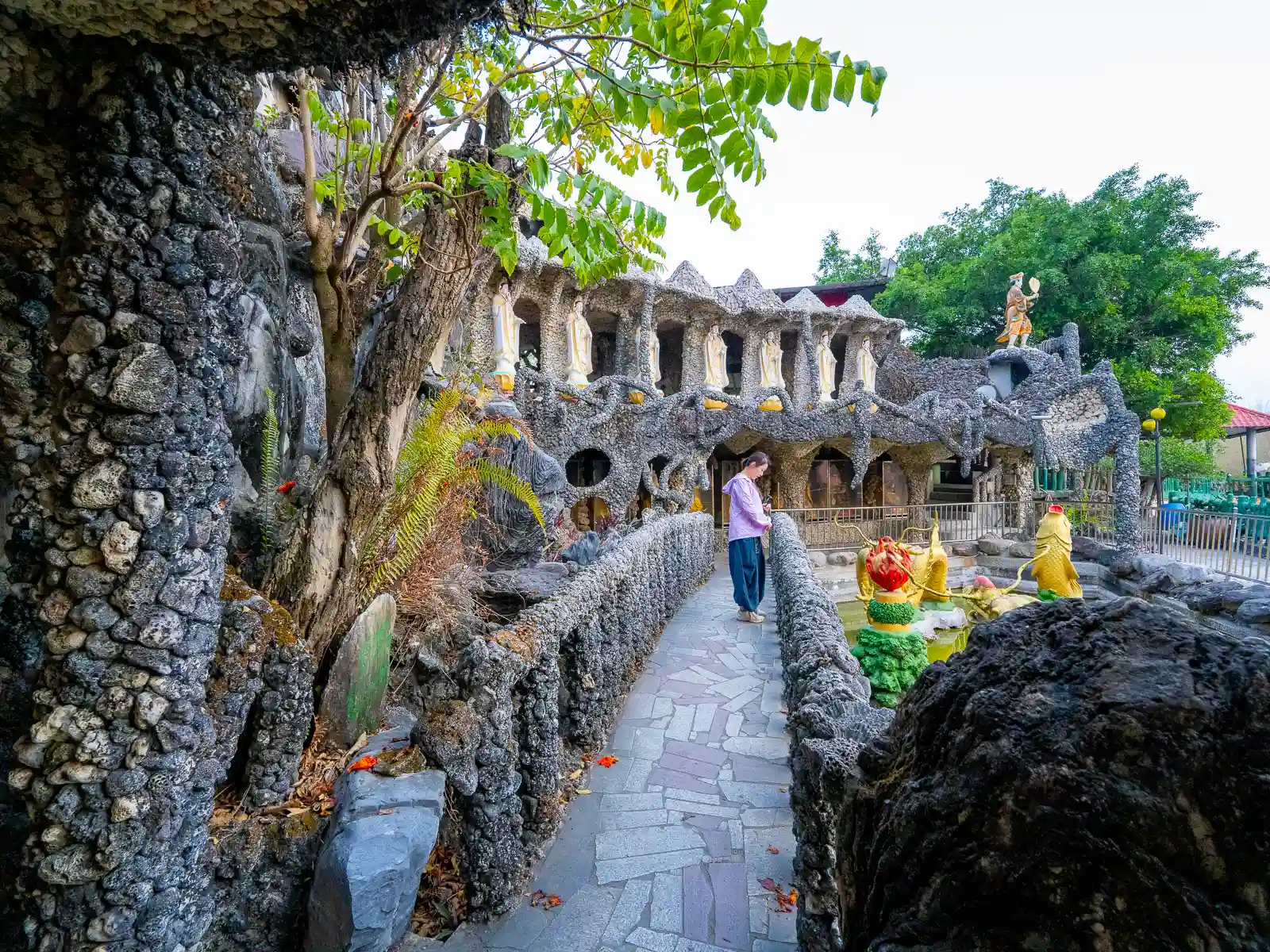
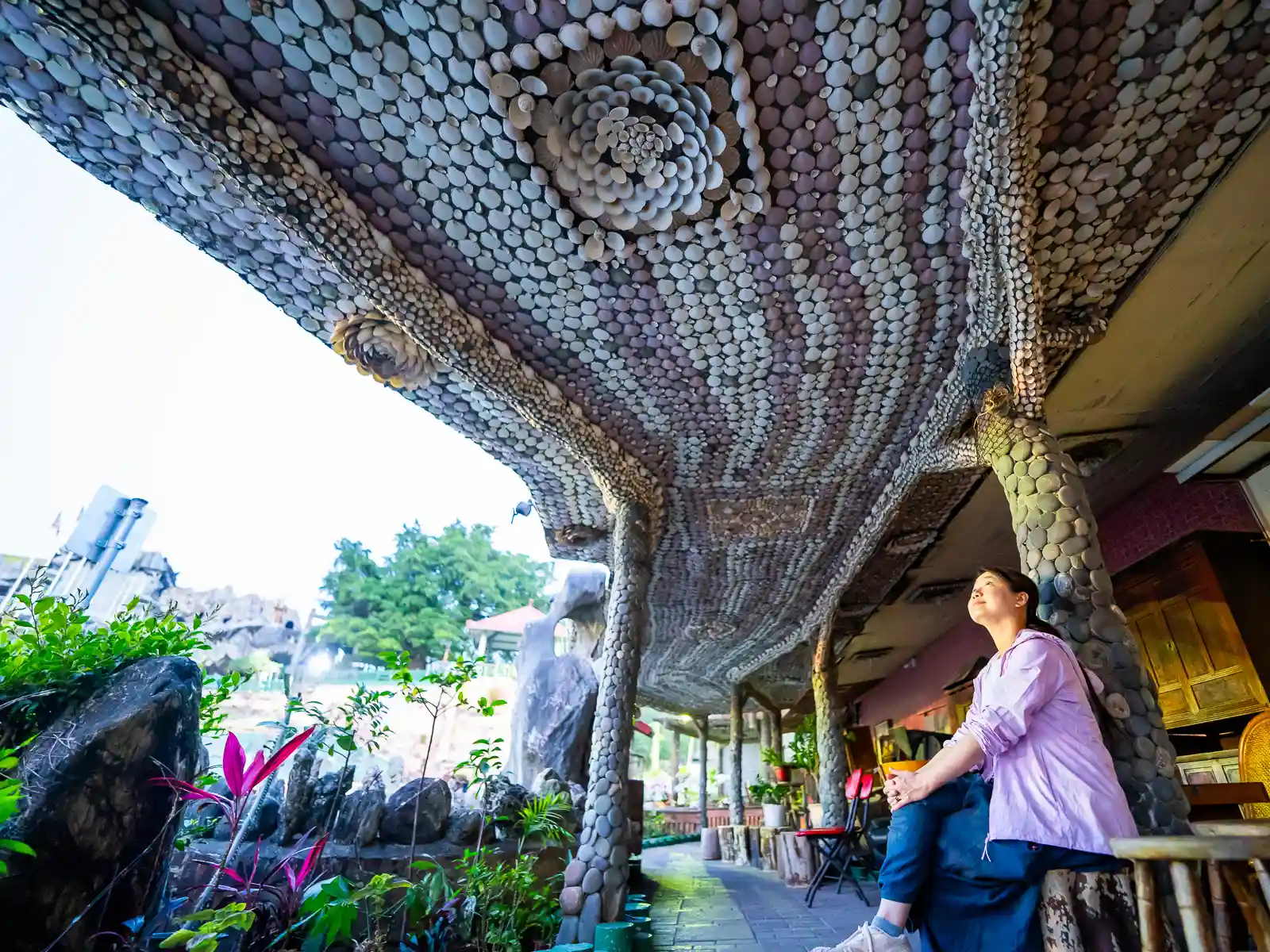
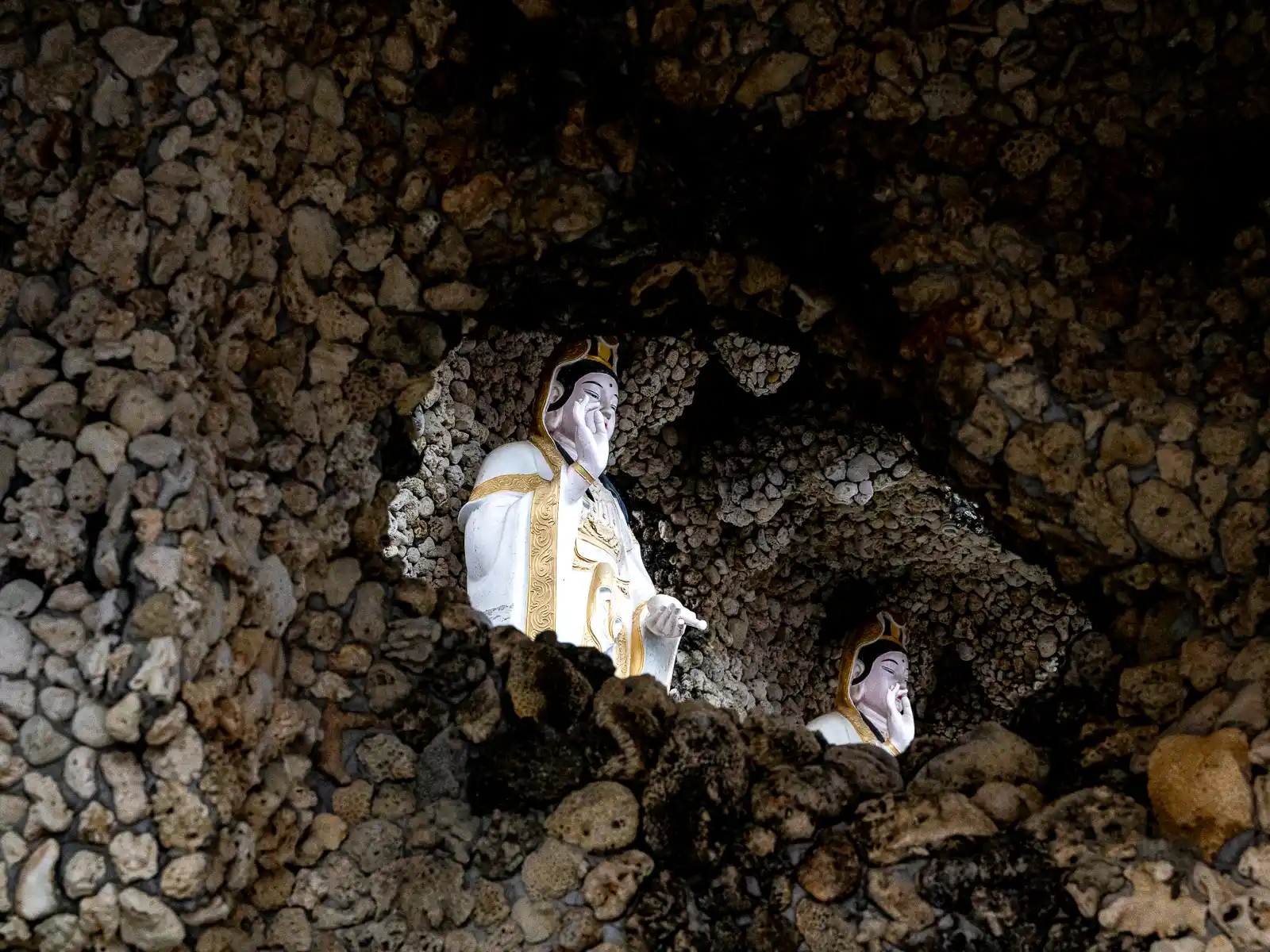
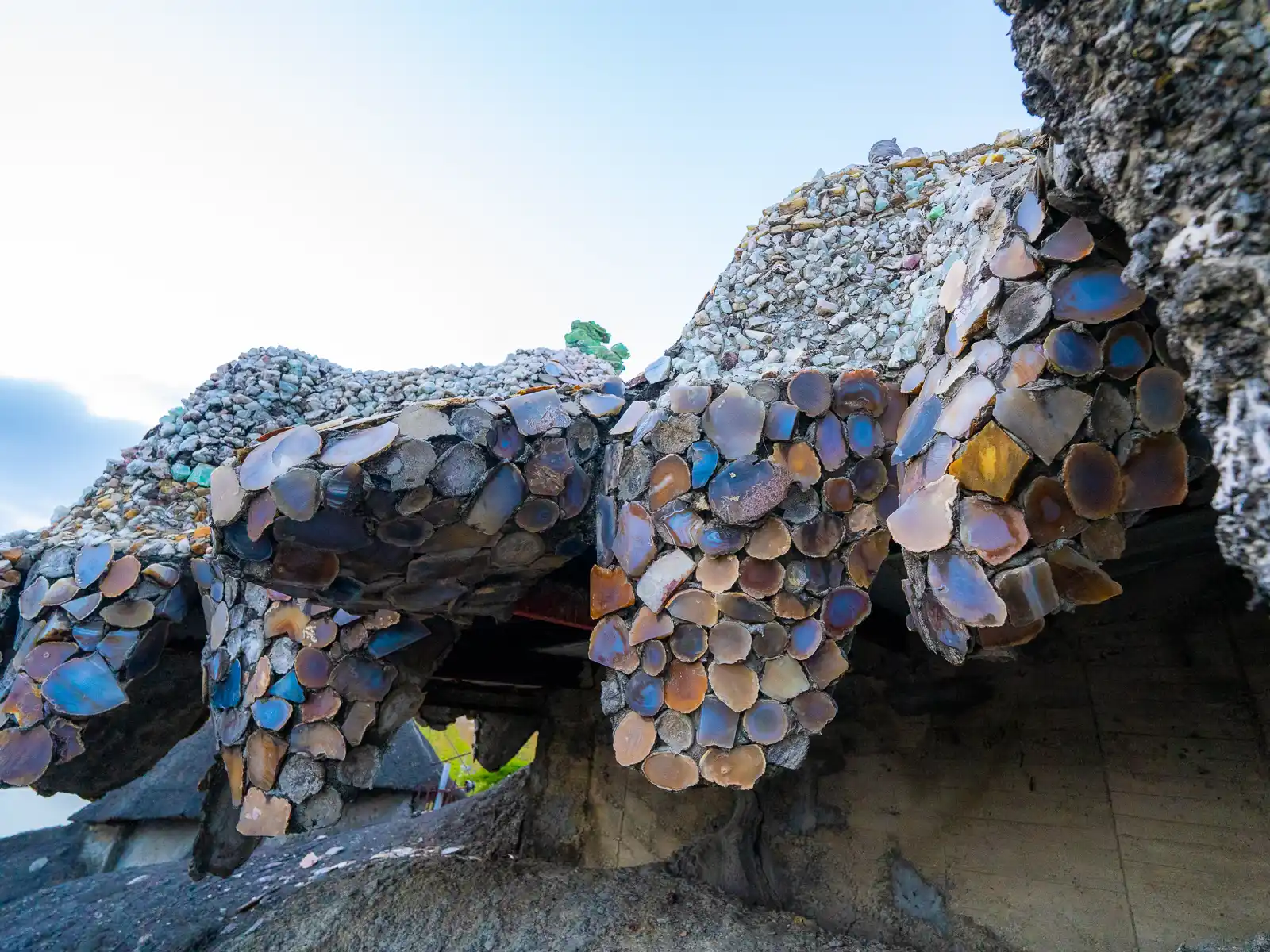
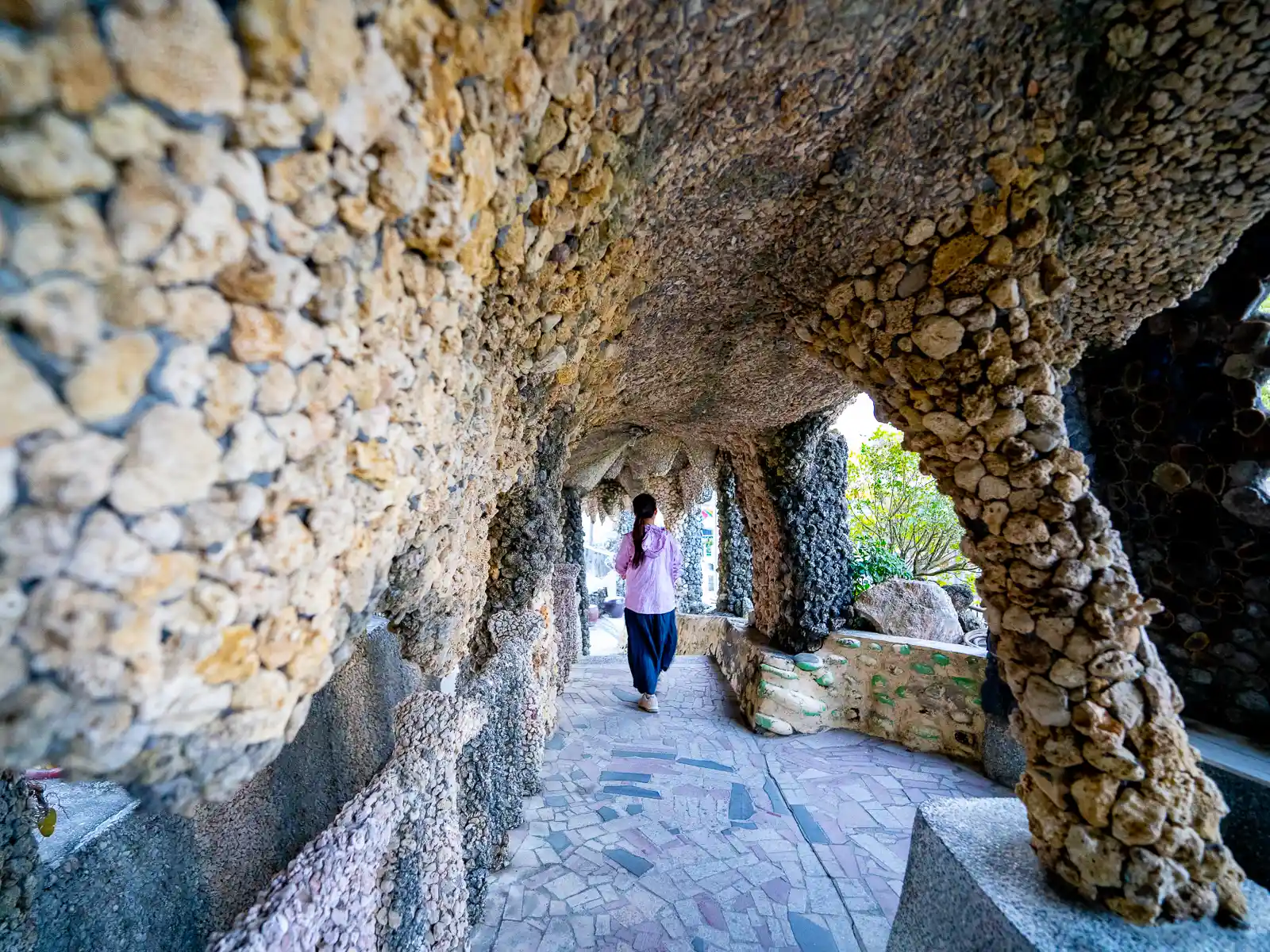
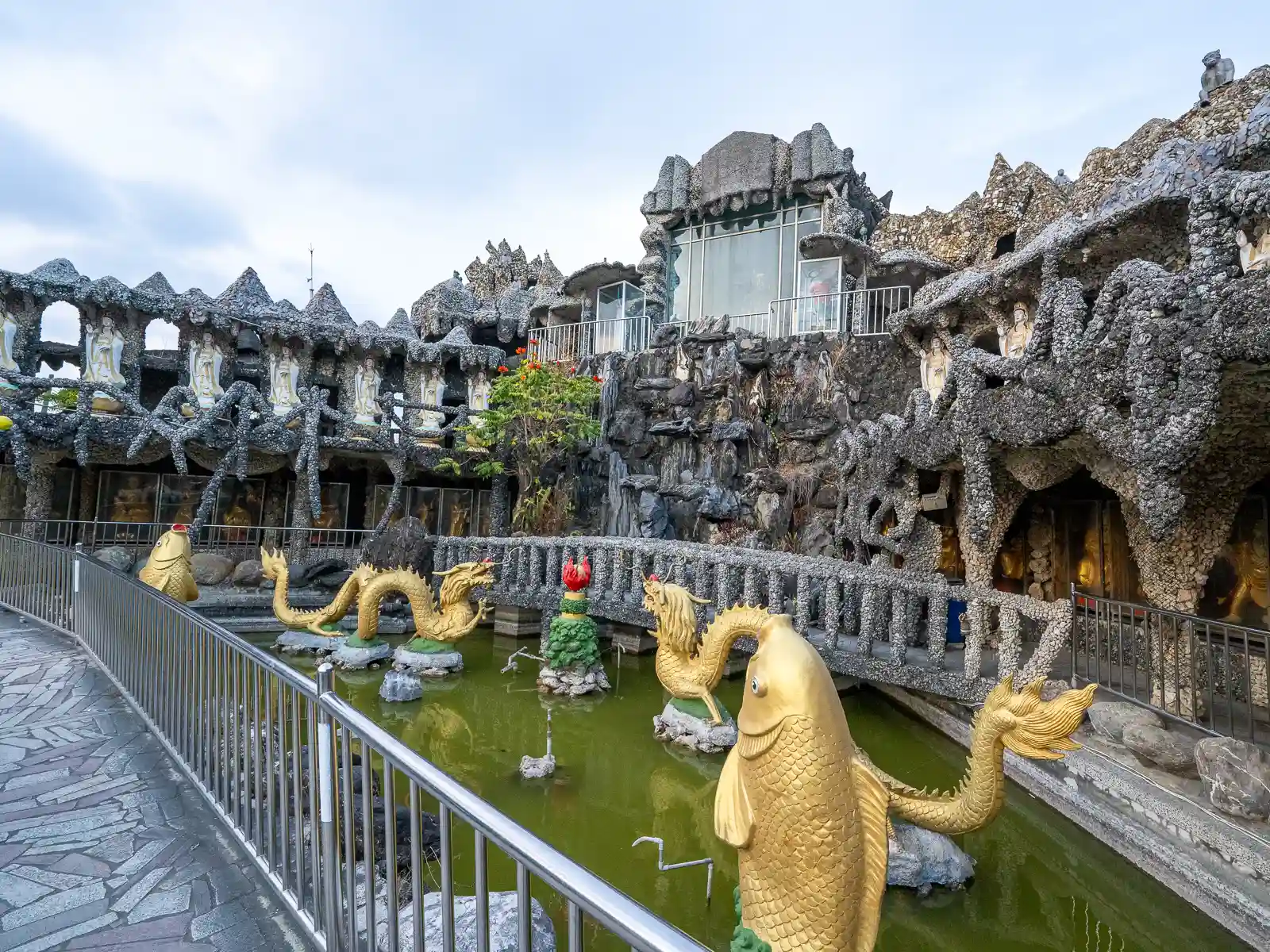
Not far from Tianliao Moon World, the Tianliao Stone Temple offers yet another otherworldly landscape, and a heartwarming story.
The Tianliao Stone Temple, also known as Cixuan Shengtian Gong, was built by a group of Thai workers who became stranded in Taiwan after the construction company that hired them to work on a local highway project went bankrupt. Without a way back to Thailand, the workers were temporarily stranded in Taiwan with no purpose.
When the local kind-hearted temple master heard of their plight, she offered them shelter. In their gratitude they insisted on contributing to the construction of the new temple.
Without a specific plan, they spent 12 years constructing the Stone Temple from shells, coral, stone and other found material. As a result, the temple feels more like a mermaid palace than a temple devoted to Cundi Bodhisattva (one of the more common manifestations of Guanyin, the goddess of mercy). Nevertheless, the temple may have one of the most touching origin stories of any in Taiwan.
Fo Guang Shan Buddha Museum
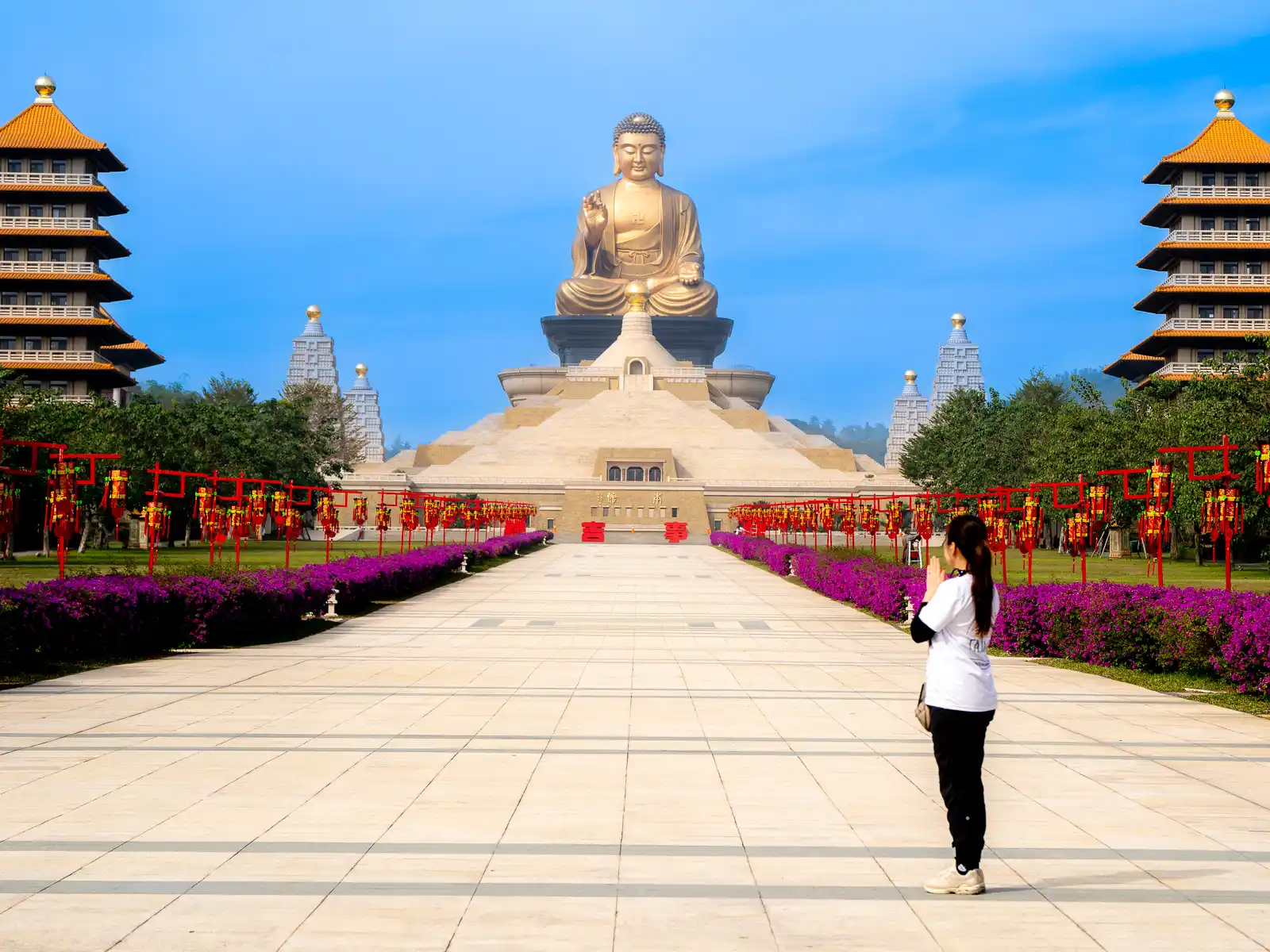
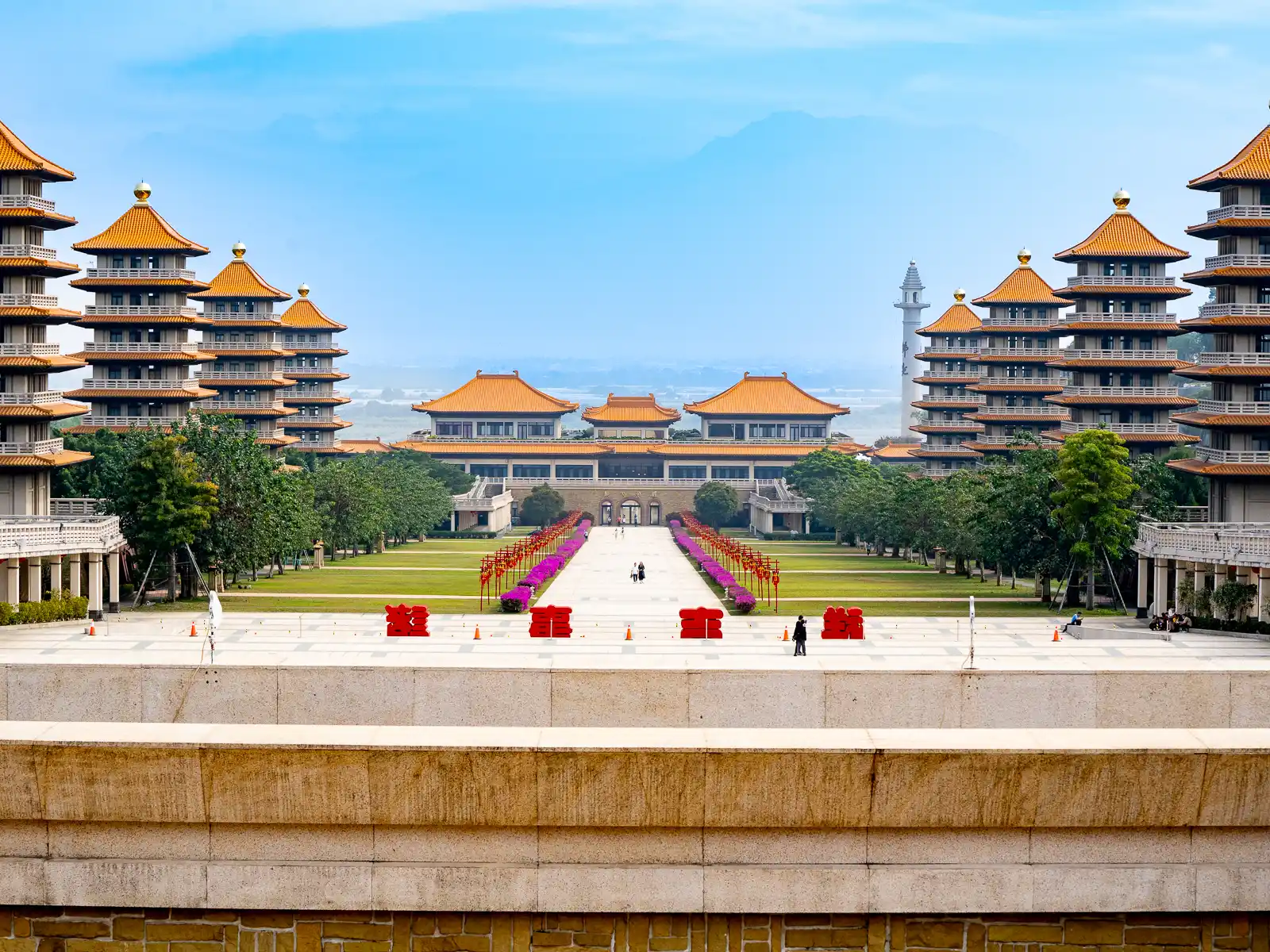
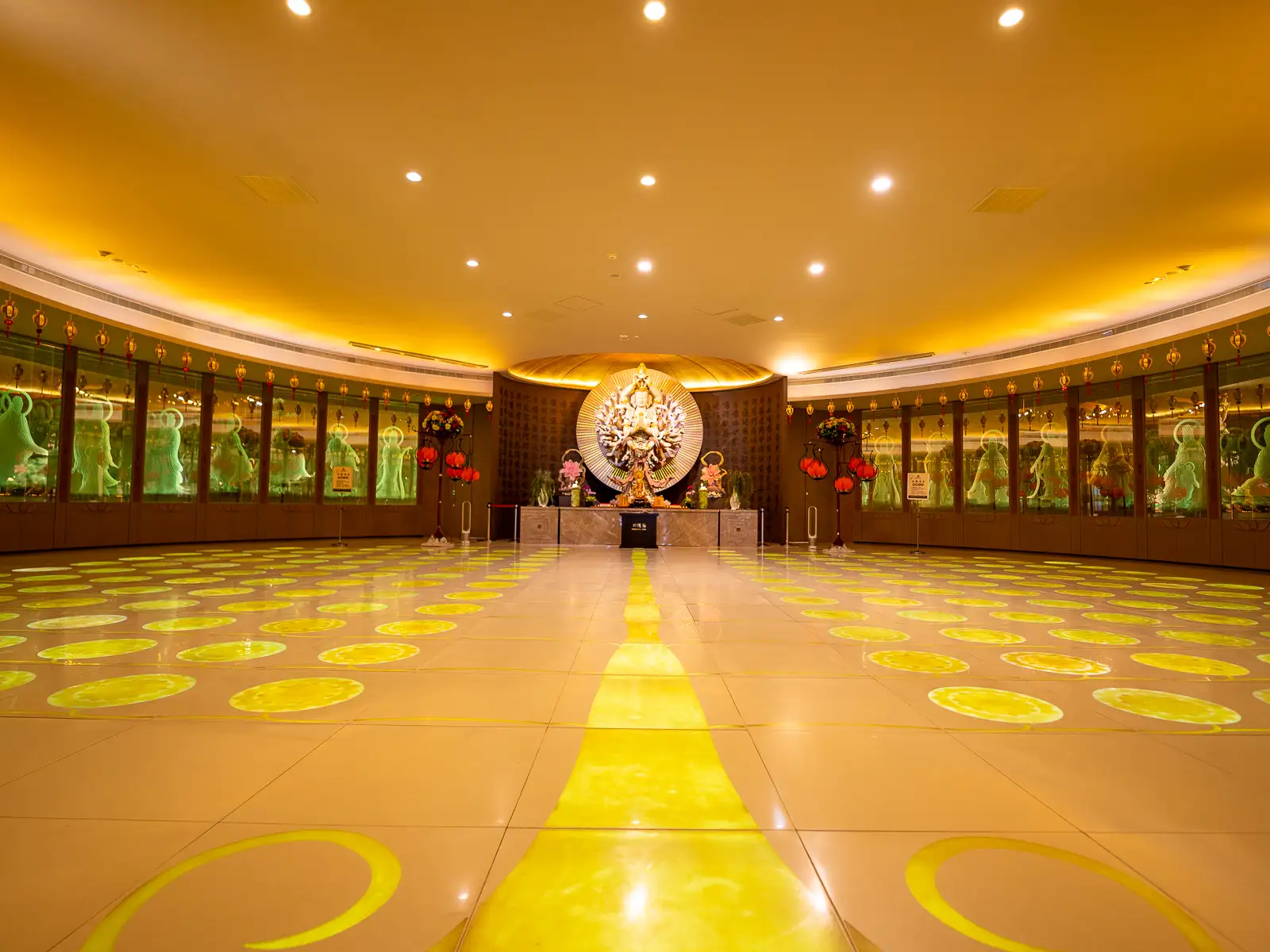
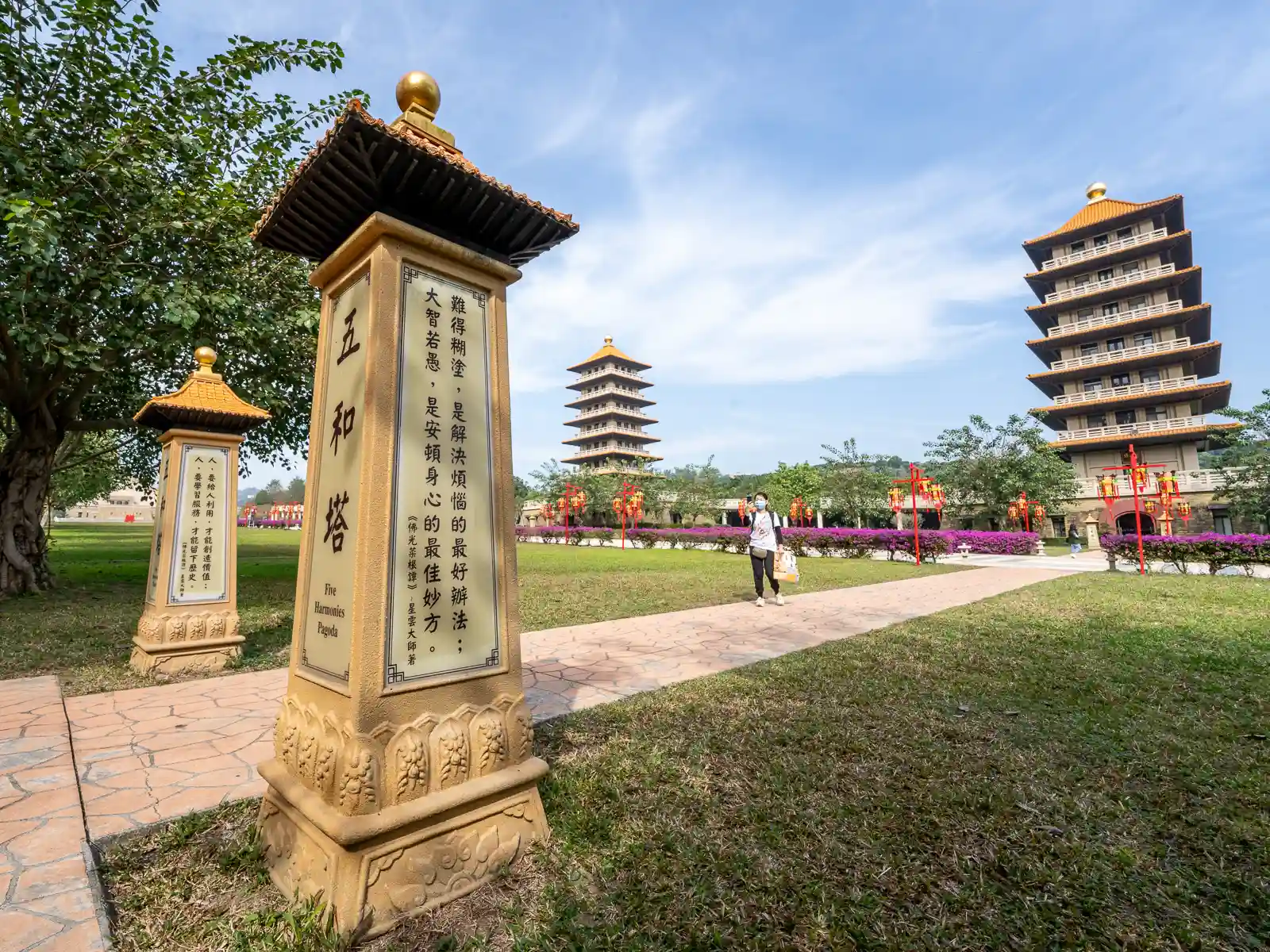
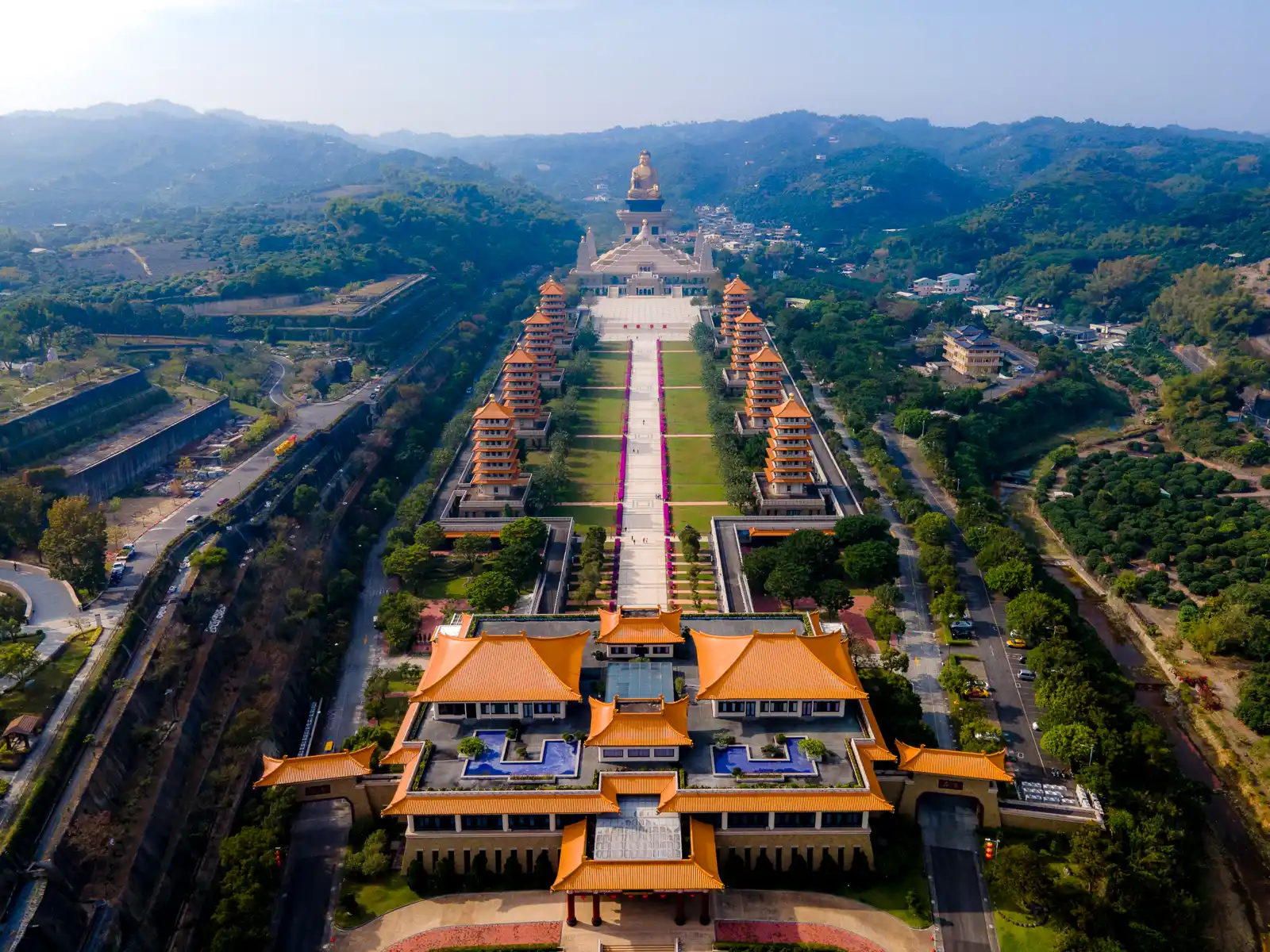
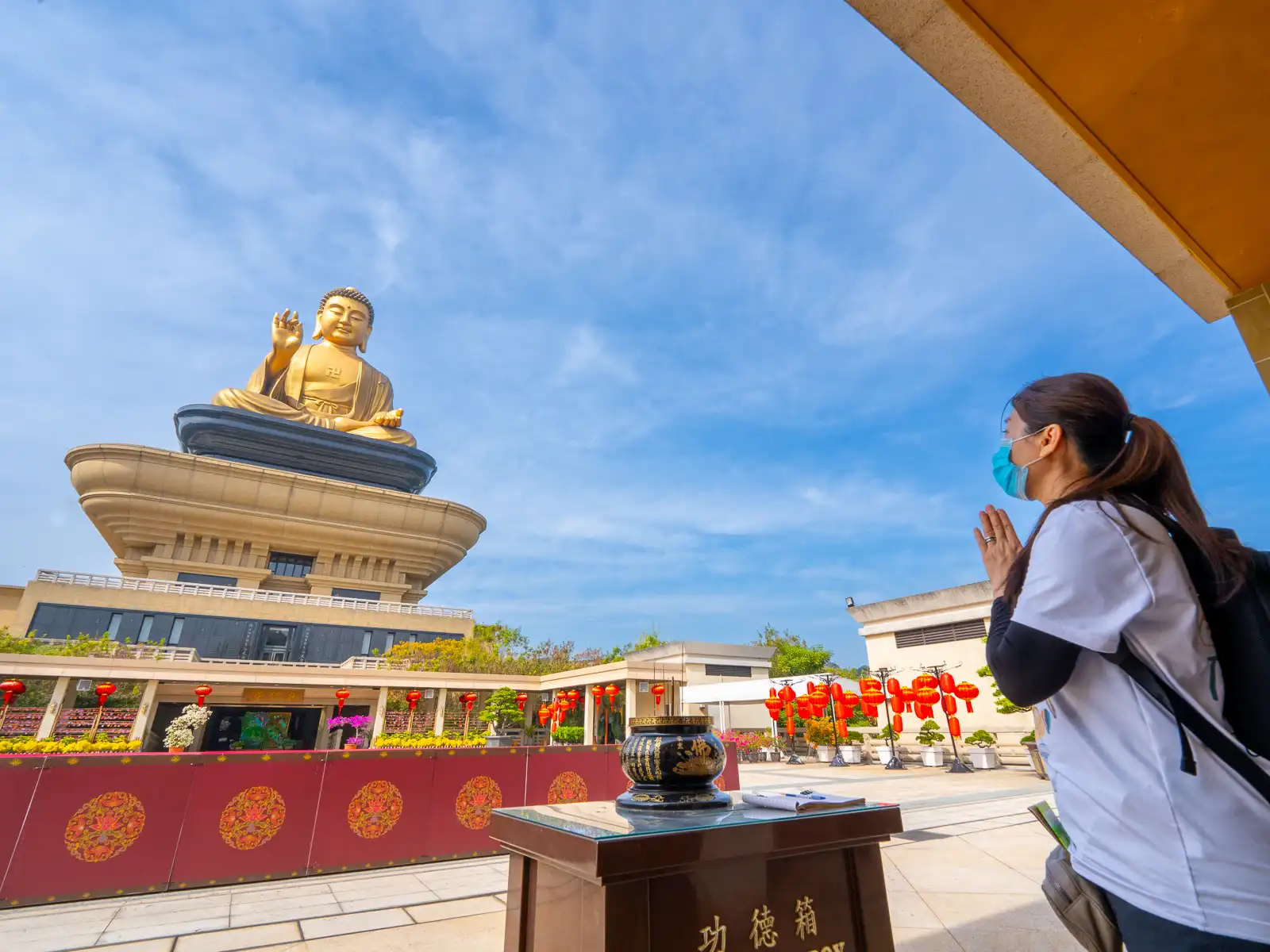
The Fo Guang Shan Monastery and Buddha Museum complex covers 1-square-kilometer of mountainside in Kaohsiung, making it Taiwan’s largest Buddhist site. Its brilliant 108-meter-tall bronze Big Buddha, which sits behind the Main Hall, can be seen from far away in Pingtung’s countryside and is the tallest sitting bronze Buddha statue in the world.
The Fo Guang Shan Museum is actually so large it is made up of smaller museums like the Museum of Underground Palaces, which exhibits precious Buddhist artifacts from Underground Palaces around the world.
Art galleries on the 1st floor and 2nd floor of the Main Hall display multiple permanent exhibitions as well as various non-permanent exhibitions which feature a rotating collection of art from around the world.
Lotus Pond
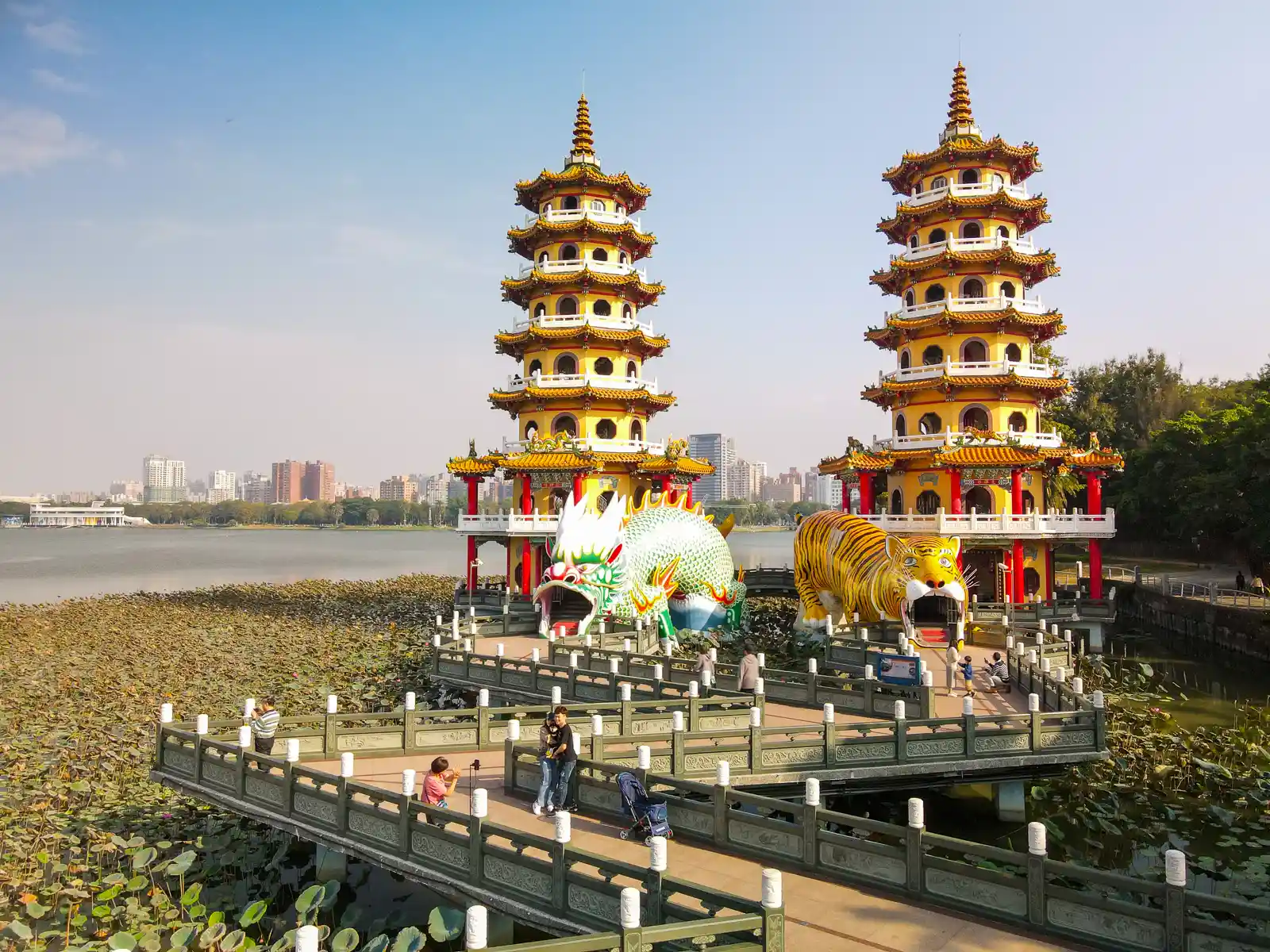
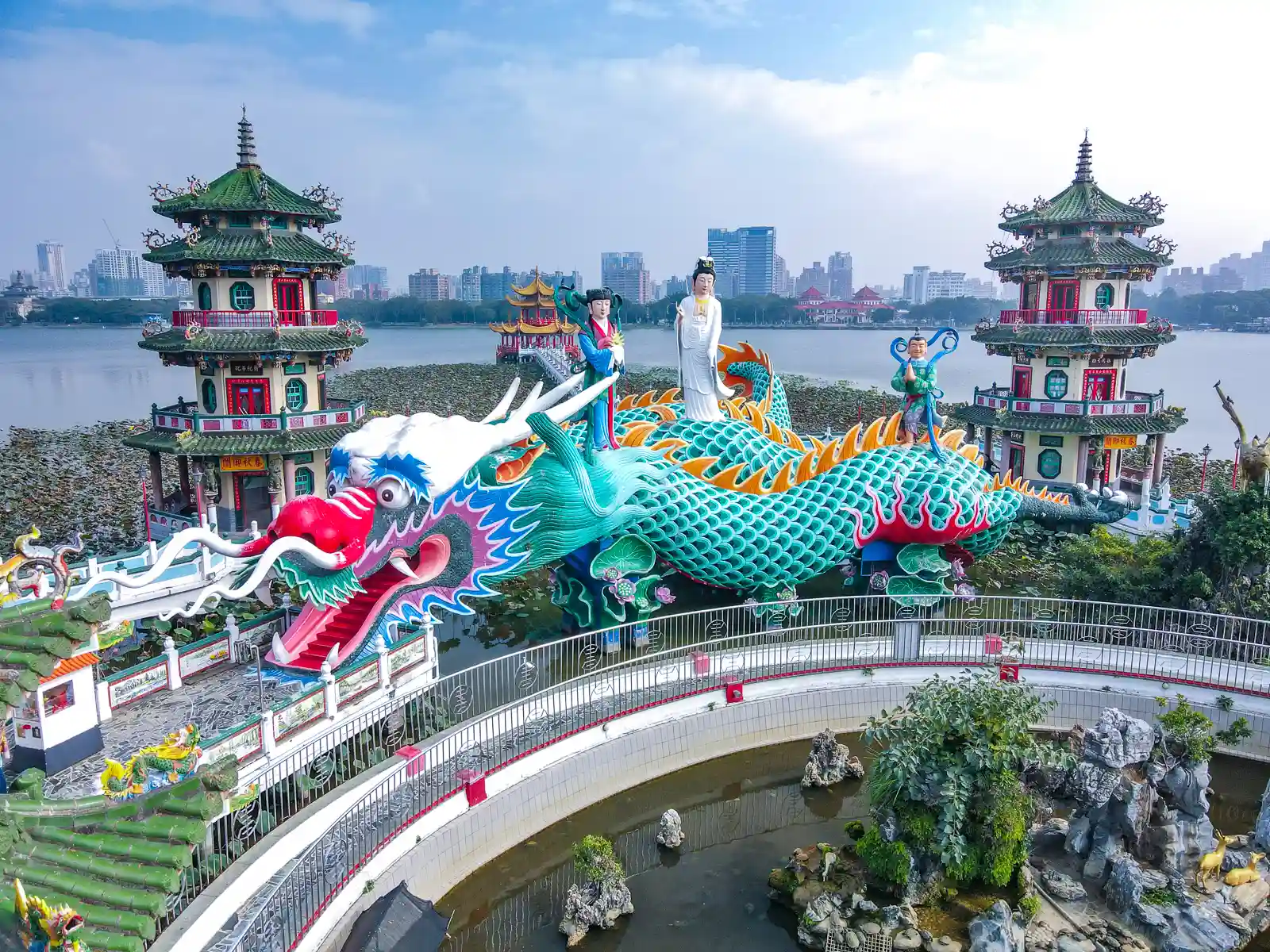
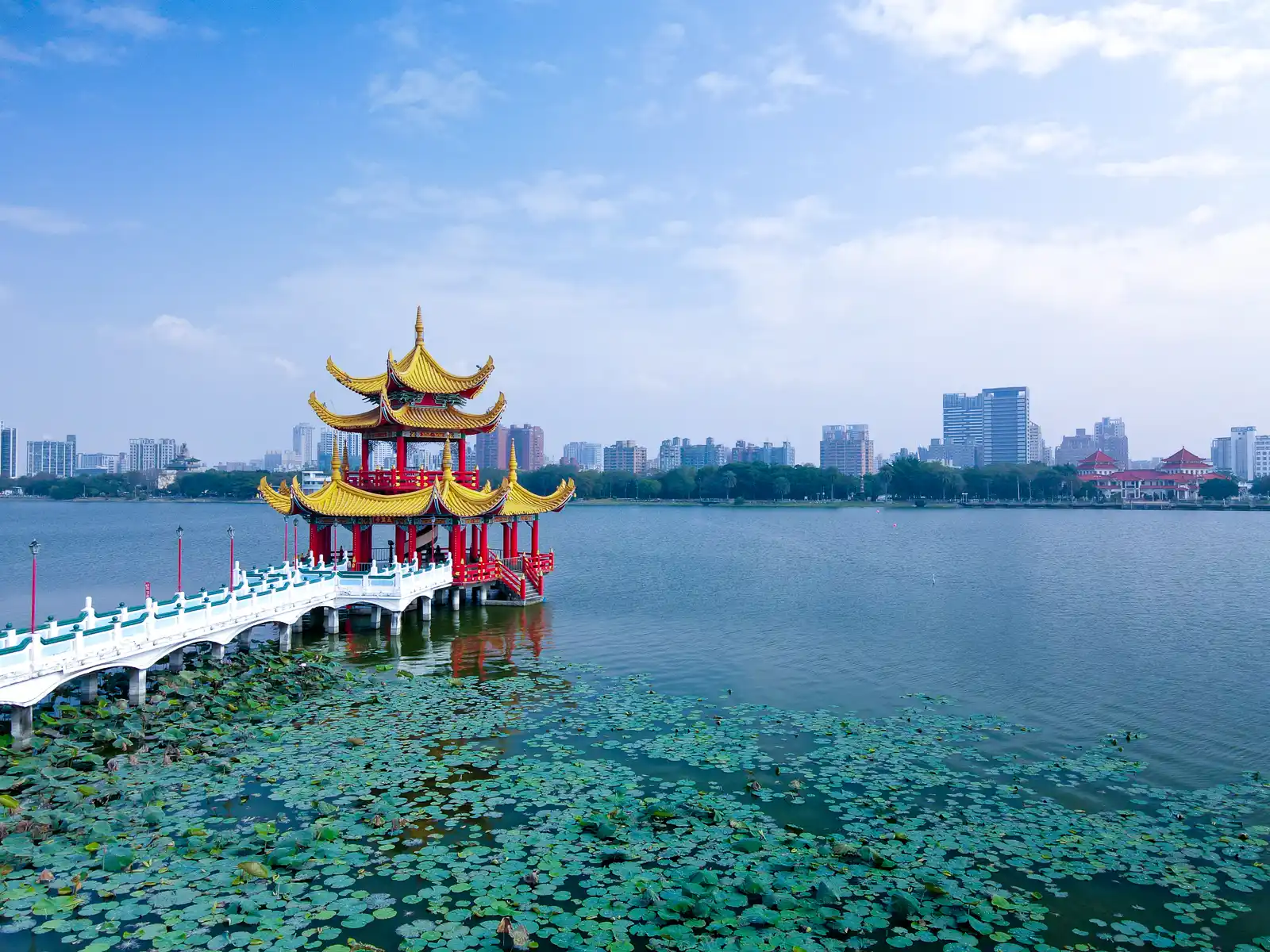
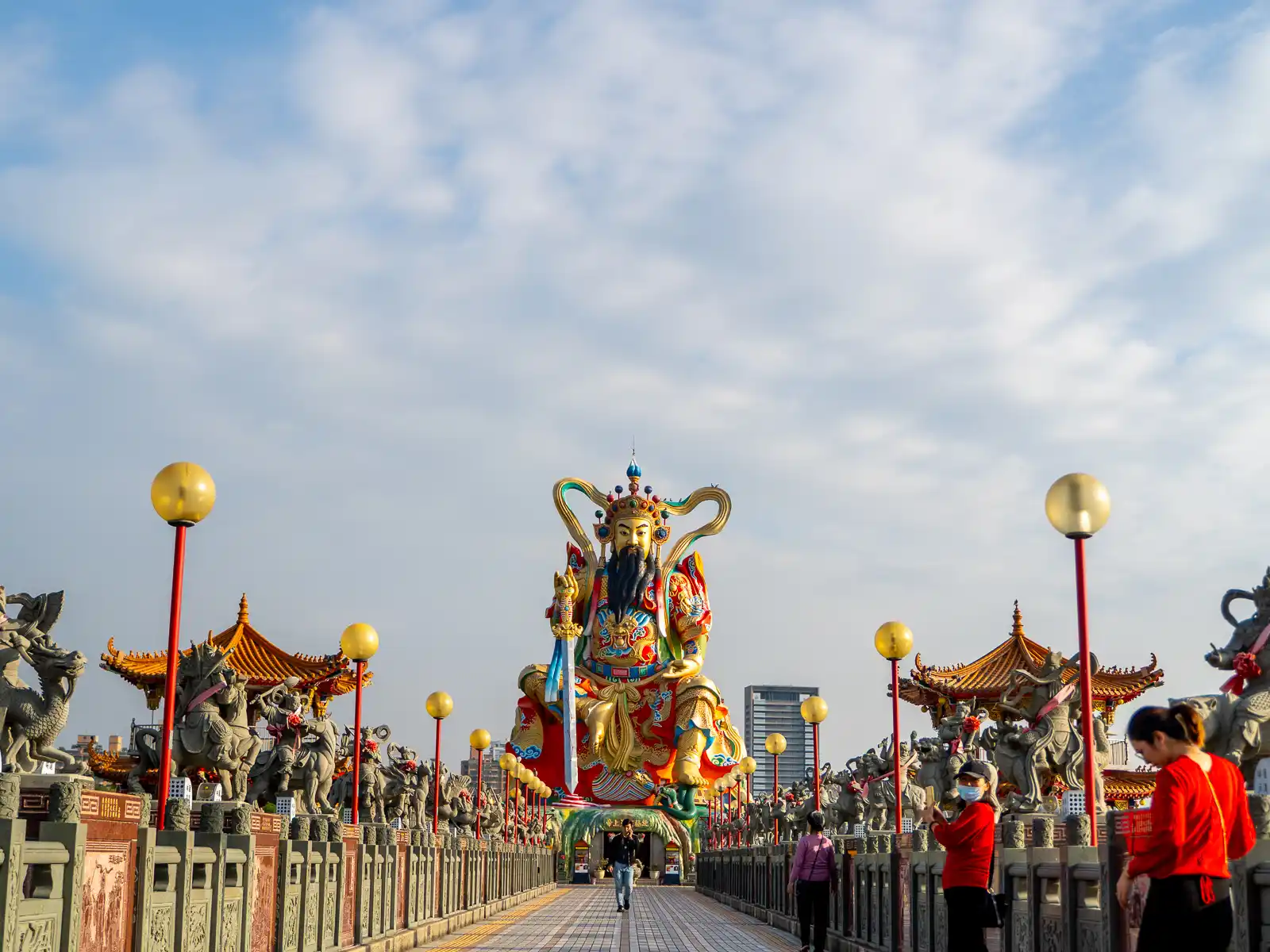
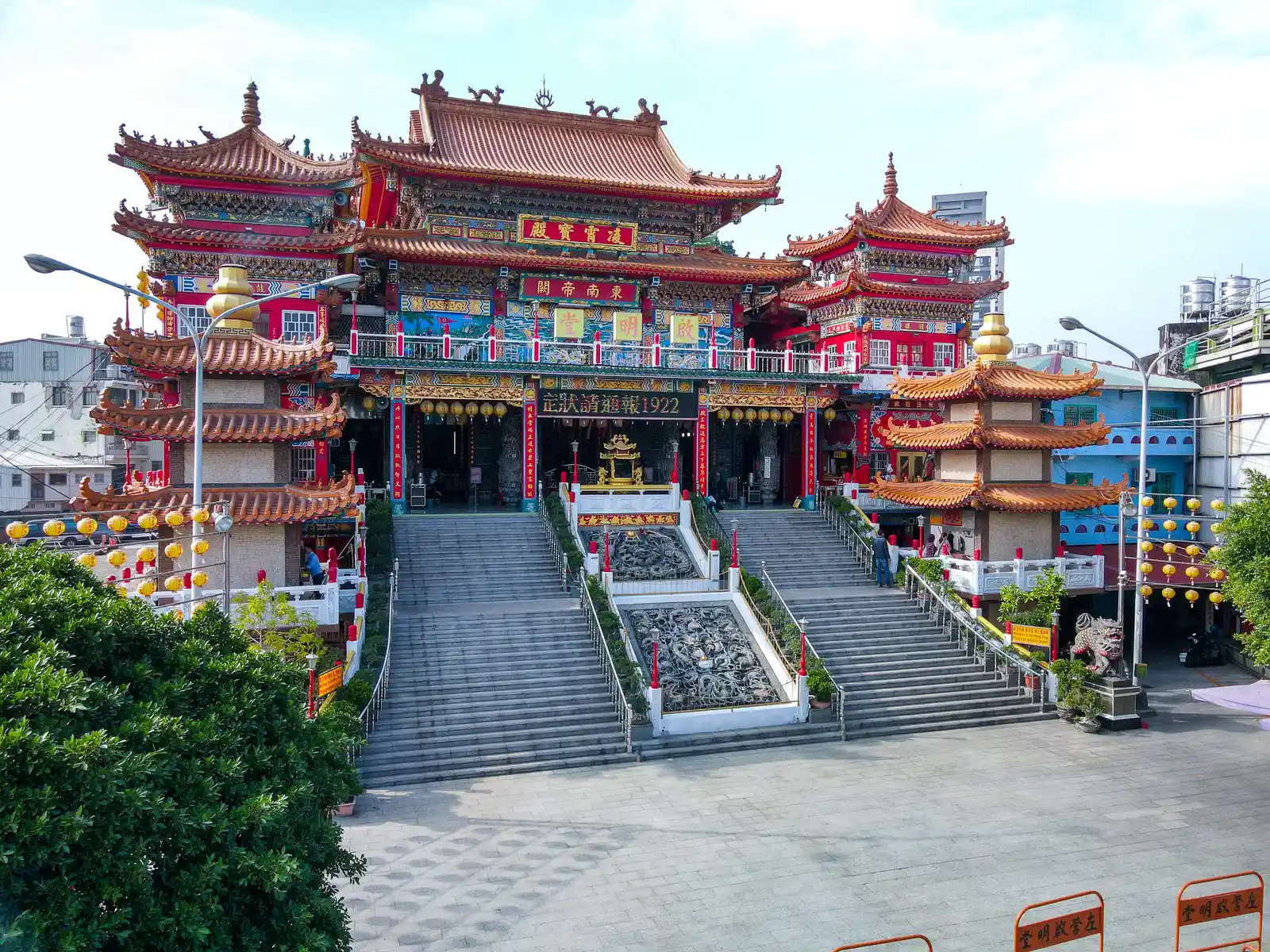
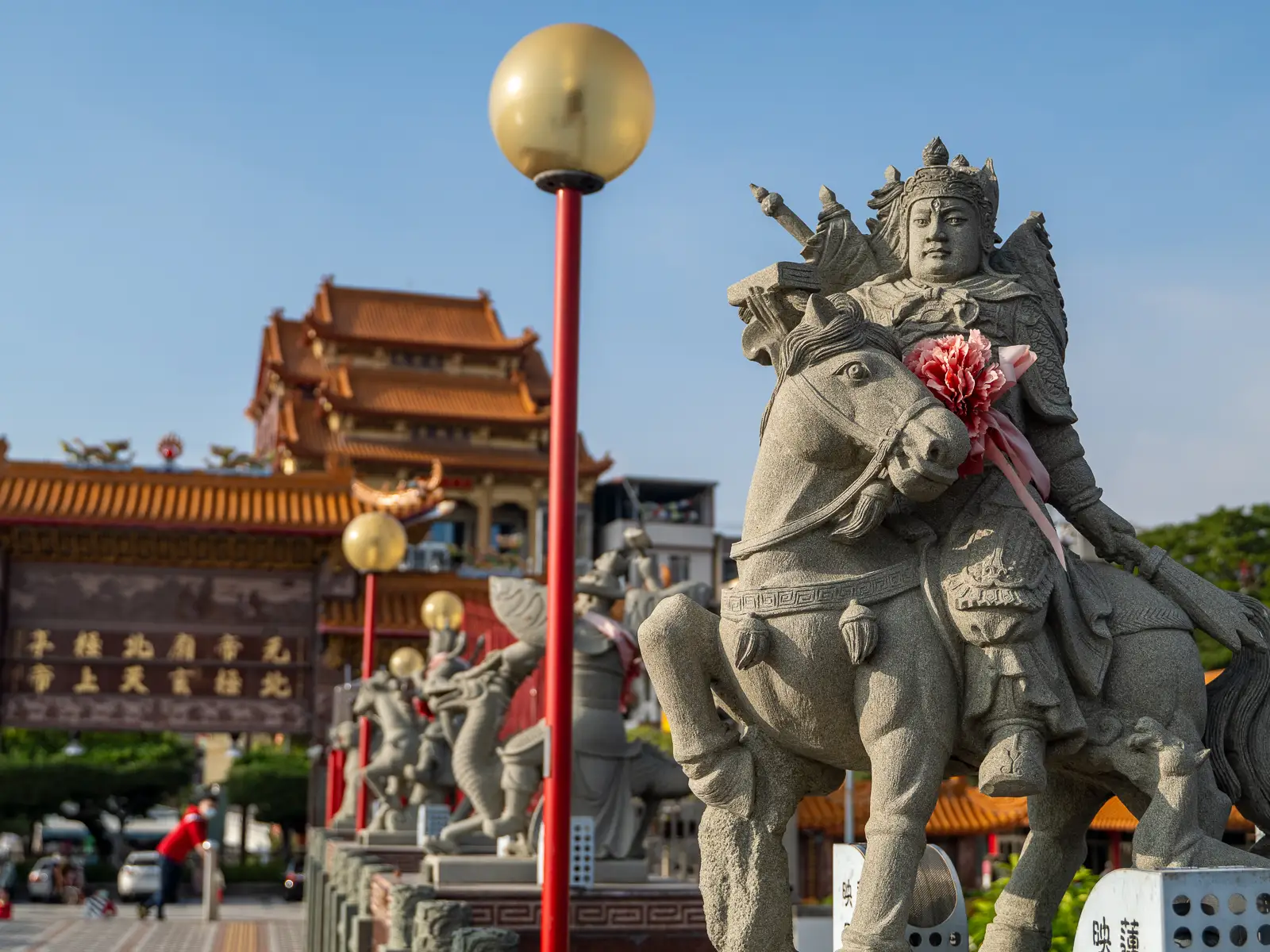
Lotus Pond in Kaohsiung features floating temples, massive sculptures, 300-year-old city walls, and plenty of local avifauna for visitors to enjoy. The oldest temple in the area, Kaohsiung Zuoying Confucius Temple, was built in 1684 and is a destination in its own right.
Nearby, the picturesque Spring and Autumn Pavilions and the Dragon and Tiger Pagodas appear to float on the pond’s surface. Surrounded by a natural shroud of lotus, egrets and herons, these multi-story temples feature detailed, larger-than-life sculptures of tigers and dragons at their entrance and exit.
Further along the shore, behind the Zuoying Yuandi Temple, another bridge extends into the lake leading to the tallest water statue in Southeast Asia, a giant statue of Xuanwu (Xuantian Shangdi) that stands at 72 meters tall.
Lotus Wake Park
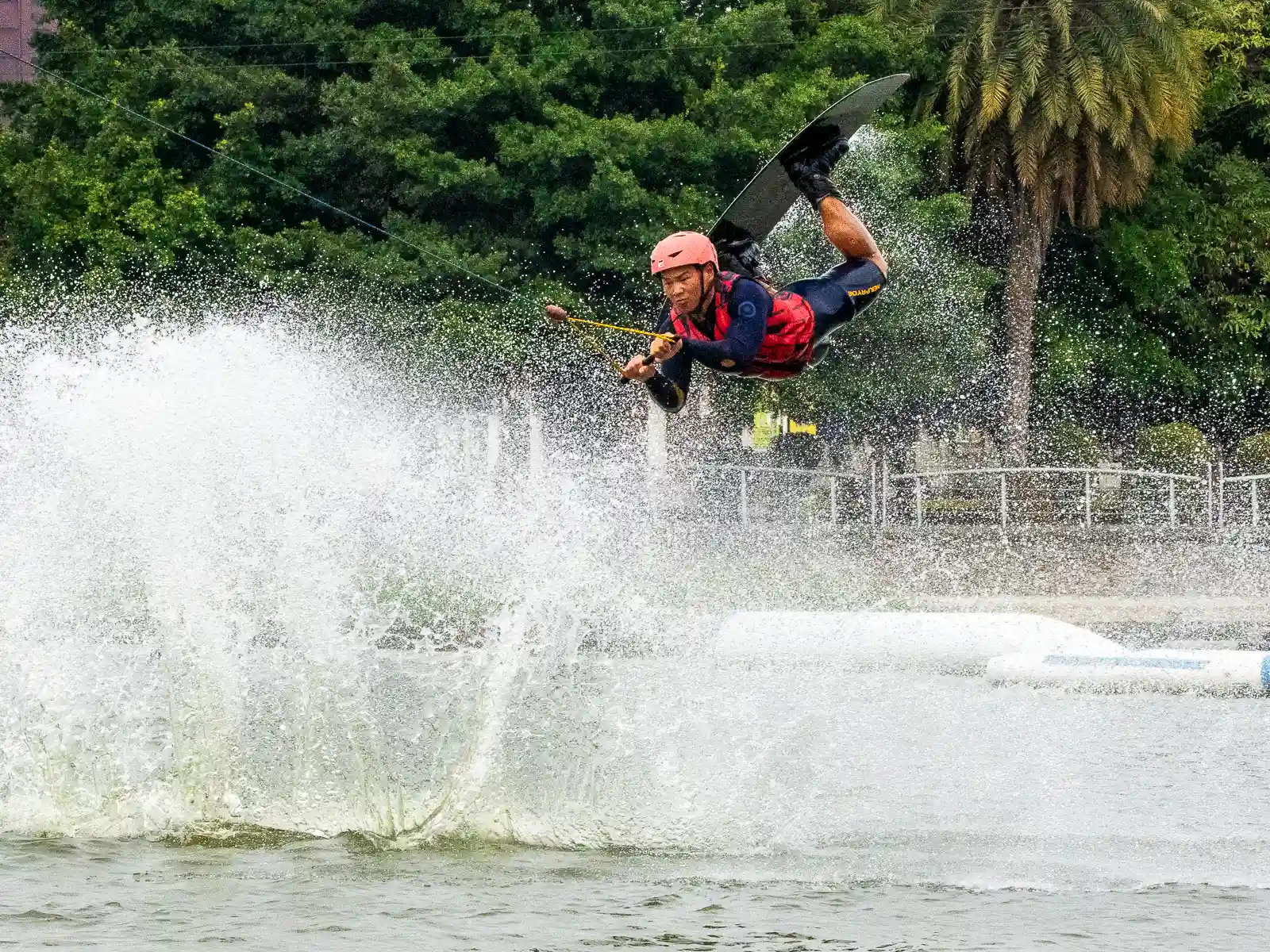
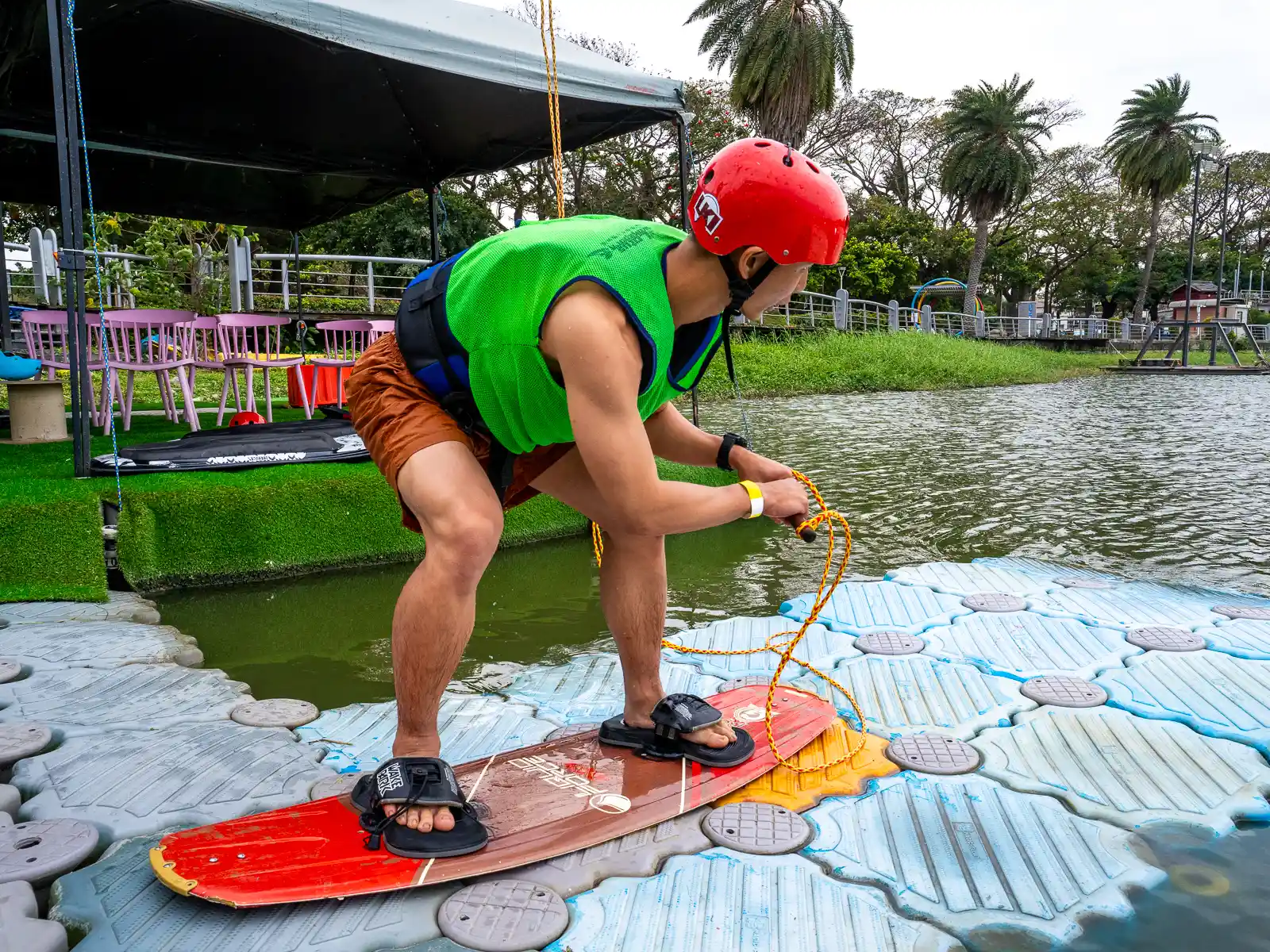
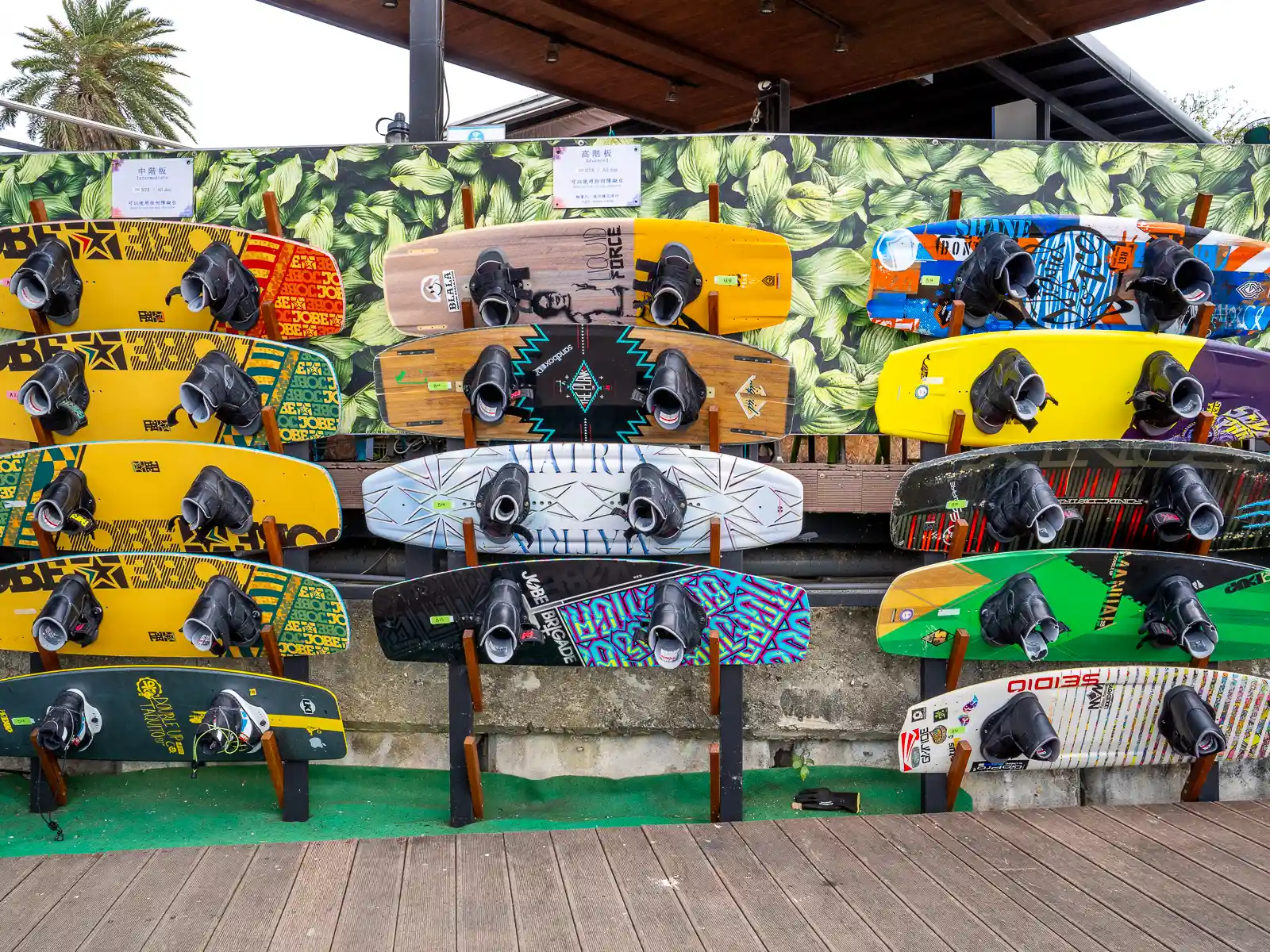
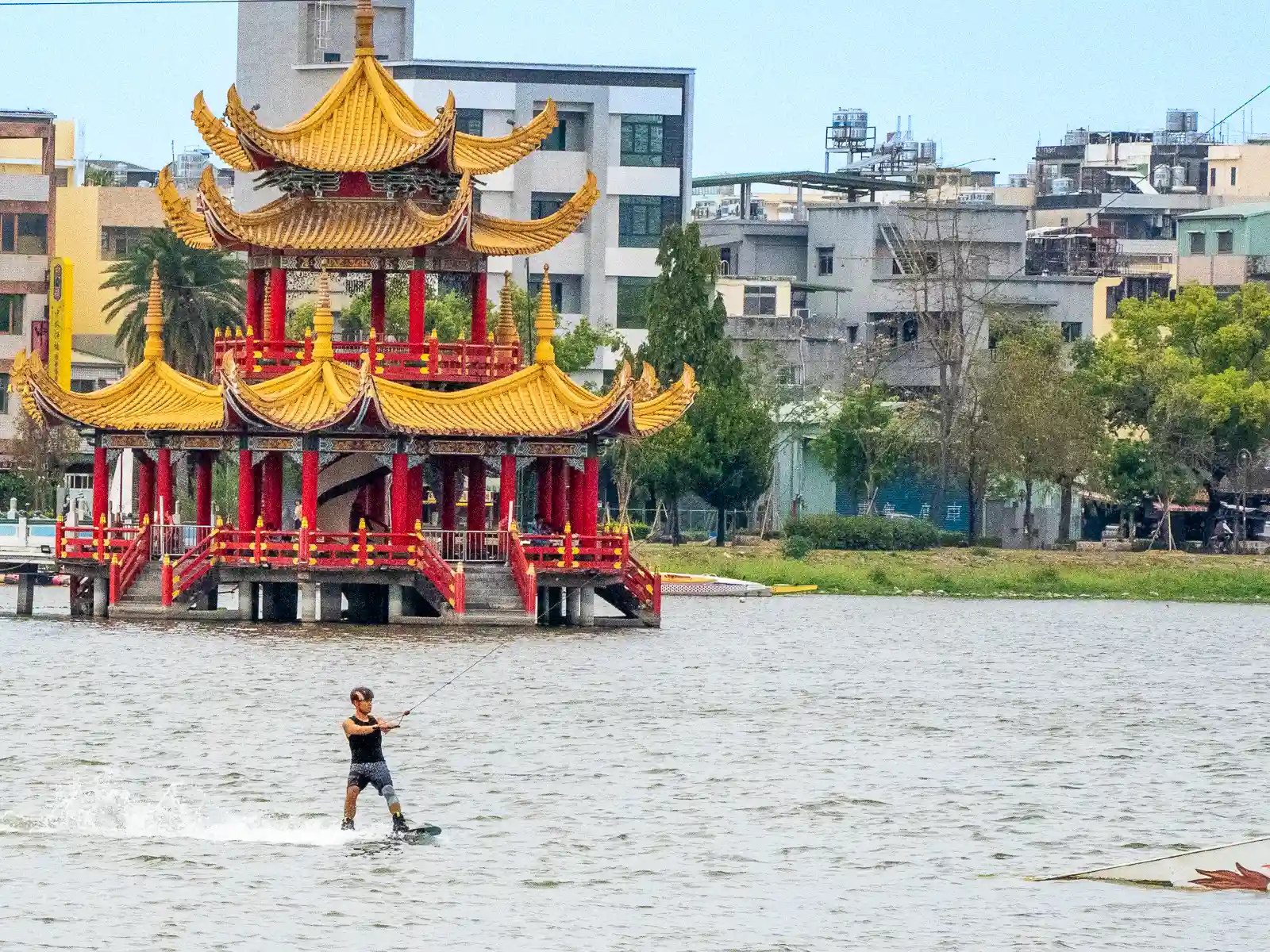
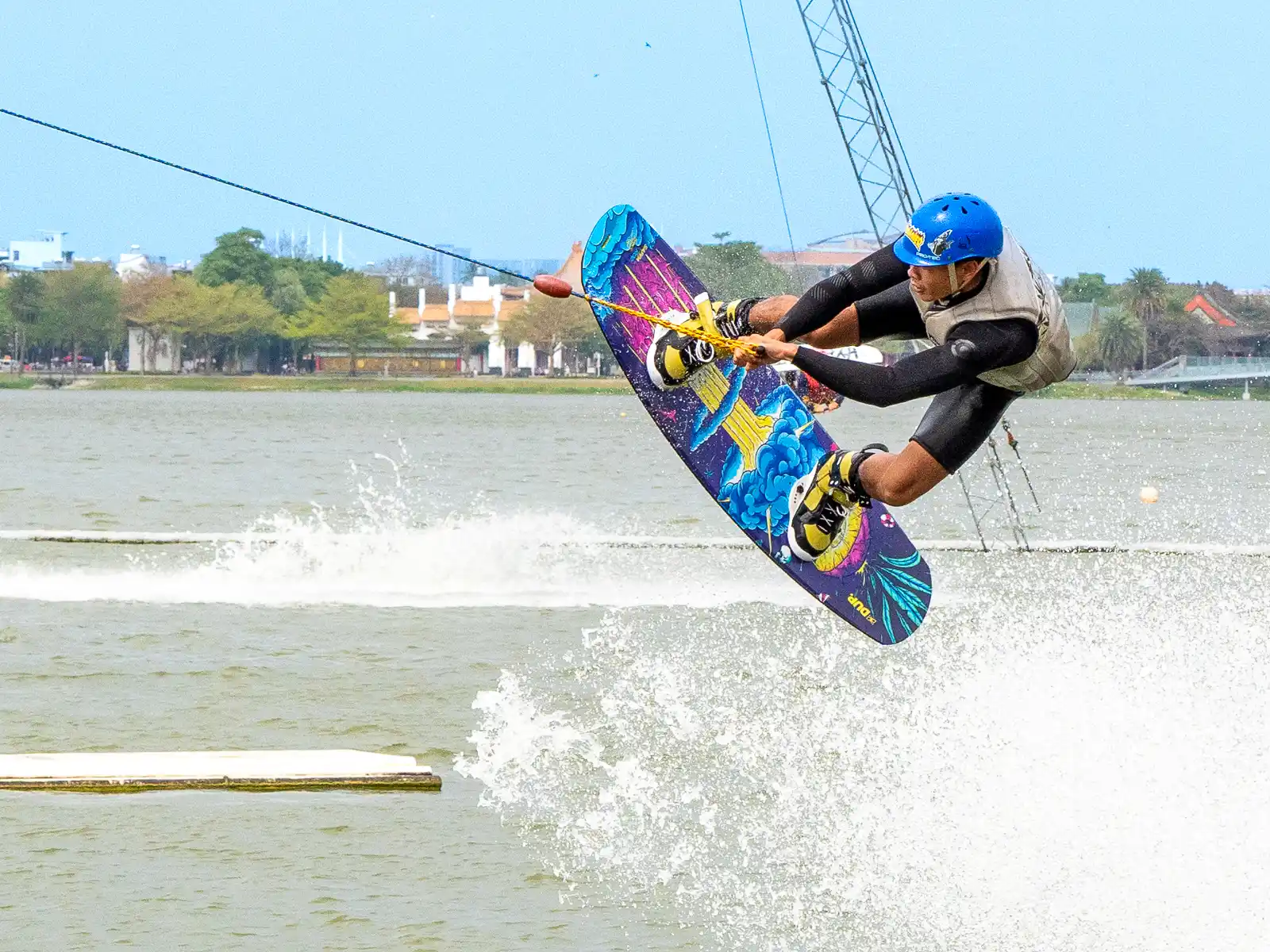
Lotus Wake Park is located on the southern end of Lotus Pond and is the perfect way to cool off from Kaohsiung’s year-round heat while getting the adrenaline pumping.
The park makes use of a system of suspended cables to make learning wakeboarding fun and easy. With a variety of features, like ramps and other obstacles, the park offers a dynamic riding experience regardless of skill level.
The friendly and enthusiastic coaches here are excellent instructors, and the park offers both beginner and advanced lessons. Once you’ve mastered the cable system and basics of riding a wakeboard, you can challenge yourself by practicing maneuvers and tricks.
The friendly and enthusiastic coaches here are excellent instructors, offering both beginner and advanced lessons. Once you’ve mastered the cable system and wakeboarding basics, you can challenge yourself by practicing maneuvers and tricks.

